|
|
Post by chasensfo on Aug 28, 2021 4:39:02 GMT -5
\\Hefei Luogang Airport 1998 Hefei Luogang Airport IATA: HFE ICAO: ZSOF (ZSOX in the sim) Location: Hefei, China Hefei Luogang Airport was the commercial airport for Heifei, China (HFE), located between Wuhan (WUH) and Shanghai (SHA), until 30 May 2013 when the new Hefei Xinqiao opened and all commercial traffic relocated. Since then, the airport is still technically in use by helicopters and some general aviation companies, but the facilities and surfaces are largely diralect. In 1998, the airport had a single runway and a small terminal with just 2 jetbridges, and most airliners regulated to remote stands some distance from the terminal. Most flights were operated by China Southern Airlines and China Eastern Airlines, with no flights larger than a 757-200 operating scheduled service at the time. Air China and several other major airlines didn't serve the airport at all, but HFE was served by airlines that were less common at many Chinese airports like Air Changan, Fujian Airlines, and Shanxi Airlines. However, much of the day there was little to no airline traffic outside of a few peak times for flights. There did not seem to be much cargo activity at the time, but the airport was able to handle medium-sized aircraft when cargo carriers operated flights to HFE via the military parking. The PRC Air Force had a modest-sized presence at the airport with about a dozen J-7 Skybolt fighter jets based at the airport and parking for 6 military transport aircraft which seemed to visit regularly. The airport was expanded several times in the 2000s to include an extended terminal with some more jetbridges and more rows of airline parking while the military gradually left the airfield for the most part. In the final state, the airport had become much busier than the late 1990s and was able to accommodate some 30 airliners or so if need be. Prepar3D, being lacking in China, still uses the old airport which closed in 2013 to airline traffic as the only airport in Heifei, and the new airport is not included. The airport was even left in its basic late 1990s pre-expansion state! I have totally redone the default airport with all proper parking, taxiway and runway signage, lighting, and all buildings represented. The default buildings were replaced by other generic buildings looking more similar to the airport at the time, with the terminals and tower re-done as well. Note that HFE had a unique terminal and tower, so this generic version is just a stand-in for now and still doesn't do the old terminal justice. My China Air Force 1998 flight plans using paints by Michael Pearson will add all 12 Skybolt fighters based in HFE to the airport doing touch and goes in 2-4 ship flights throughout the day. A future update will include transport aircraft. This file also changes to the old airport from ZSOF to ZSOX (already used in all the 1998 retro flight plans as the HFE airport code) and hides the default ZSOF with an exclude file to allow users to also have the modern HFE airport installed as ZOSF like real life and enjoy both if you wish. This scenery will represent the airport decently for the 1980s and early 2000s as well, possibly even earlier as sources are hard to come by. For GSX users, a GSX profile is included which will disable the use of airstairs at terminal gates with jetways, display the jetways using different models and textures to better represent the real airport, and will make China Southern the default ground handler as they were one of the largest at the airport. Airlines serving Heifei in 1998: -Air Changan -China Eastern Airlines -China Northern Airlines -China Southern Airlines -China Southwest Airlines -China United Airlines -China Yunnan Airlines -Fujian Airlines -Shanxi Airlines -Xiamen Airlines 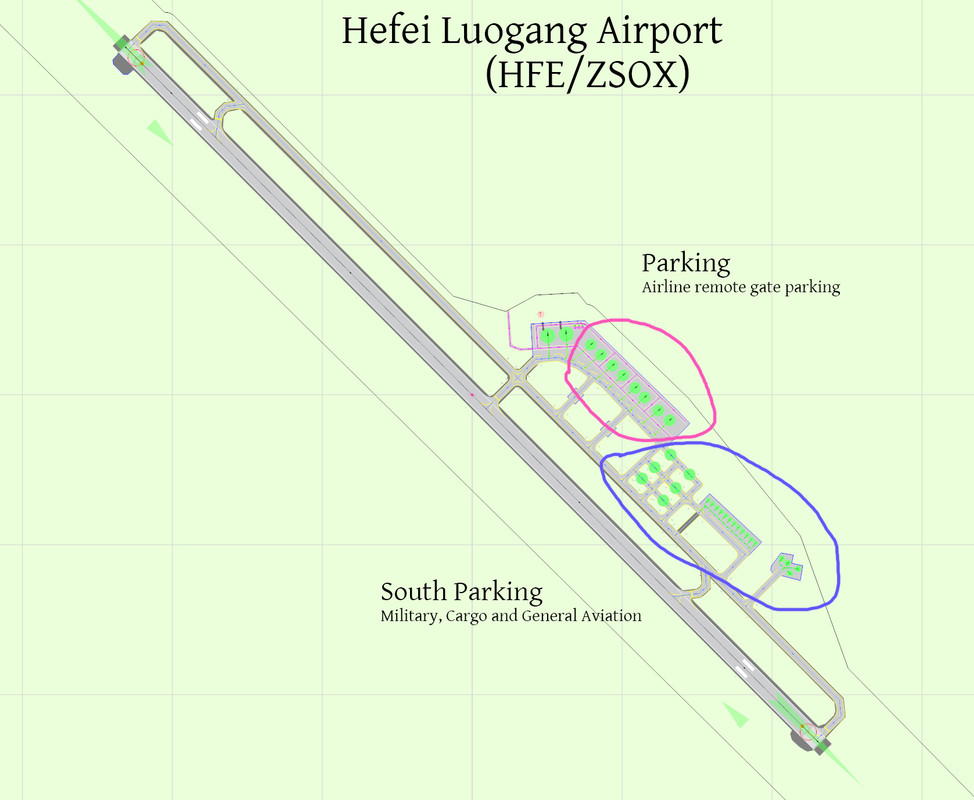   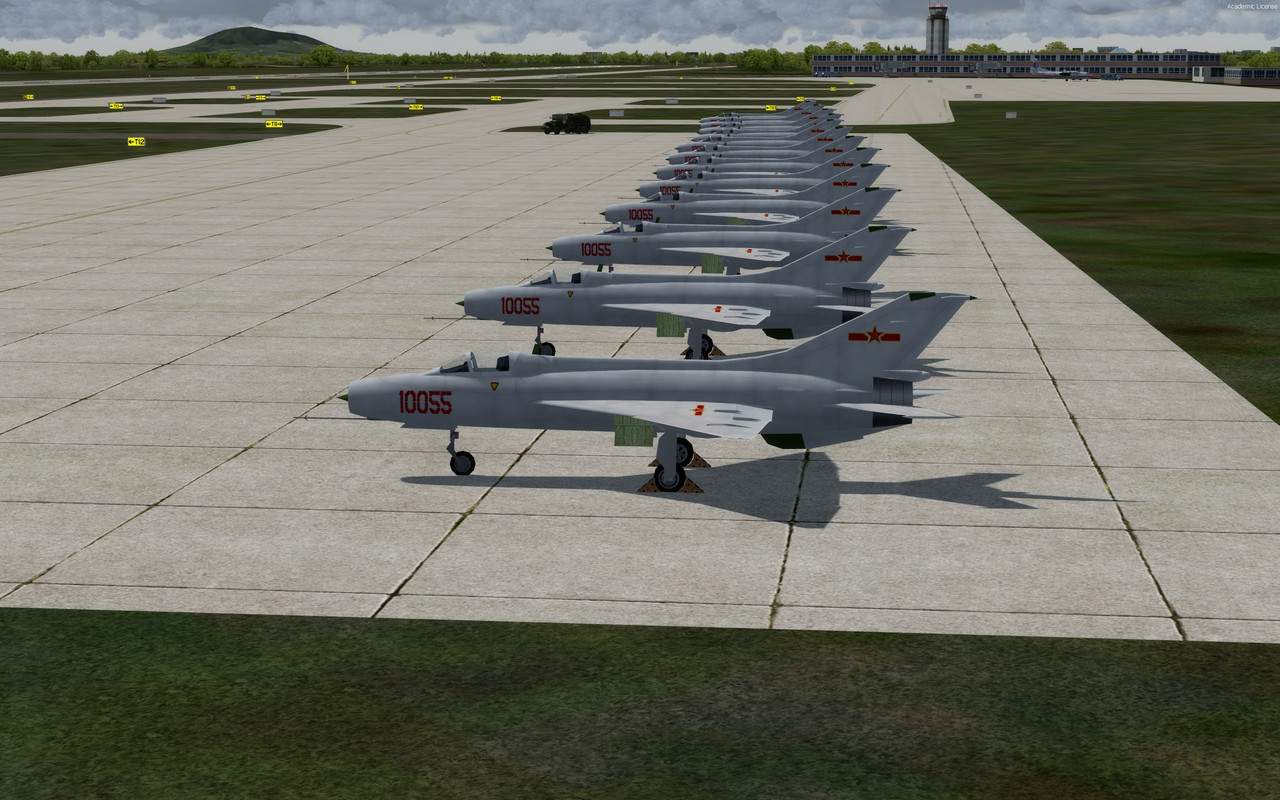 Download the 1998 ZGOX scenery here: drive.google.com/drive/u/1/folders/1S7rm3GN50eCz4Y2xBAAyut_hPB2QpPxw |
|
|
|
Post by chasensfo on Aug 28, 2021 5:51:41 GMT -5
//Shantou Waisha Airport 1998 v2 (UPDATE 04FEB22; Added dynamic lighting, changed taxiway lighting to be more realistic, modifications for better ground markings and pavement, spread out some of the airline parking for better taxi clearance) Shantou Waisha Airport IATA: SWA ICAO: ZGOW (ZGOX in the simulator) Location: Shantou, China Shantou Waisha Airport was the primary airport serving Shantou, China, about halfway between Hong Kong (HKG) and Kaohsiung (KHH), until 15 December 2011 when the Jieyang Chaoshan International Airport opened some distance away in Jieyang and all commercial traffic was moved to the new airport overnight. The PRC Air Force had a sizable presence at ZGOX and took over the airport, quickly erasing all signs of civilian traffic and re-doing much of the layout overnight to convert the airfield into a proper base. Today the airport still exists in that role, but its IATA and ICAO codes have been deactivated and transferred to the new airport. In 1998, ZGOX was a medium-sized commercial airport by the standards of China at the time before recent boom years. The major Chinese airlines mostly all served the airport at the time, and the airport saw frequent flights from medium-sized aircraft like the Tu-154M and the 757-200 with occasional visits from A300s during the week. China Southern, China Southwest Airlines, and China Eastern Airlines operated most of the flights to ZGOX at the time. The terminal was larger than most secondary Chinese airports had at the time, with 4 jetbridges, 2 medium-sized gates without bridges at the terminal, and plenty of remote parking stands. There were usually at least 1 or 2 airliners on the ground most of the day with several during peak hours, much busier than most similarly sized airports with airline traffic in China at the time. Cargo facilities adjacent to the terminal were able to handle several medium-sized aircraft at once, and the PRC Air Force had J-7 Skybolt fighter jets on both sides of the airfield. Several spots for military transport aircraft were used quite often adjacent to the main fighter jet parking. Though the airport got busier, it was built larger than need be by the late 1990s and didn't expand much until its 2011 closure. Though ZGOX is still around today as an Air Force Base, Prepar3D did not include this airport. The airport is built from scratch with all surfaces and buildings included along with many other objects including all taxiway and runway signs, all closed taxiways and the roadway system for airport vehicles, and proper lighting with all known parking created. My China Air Force 1998 flight plans using paints by Michael Pearson will add a sizable number of Skybolt fighters based in ZGOX to the airport doing touch and goes in 2-4 ship flights throughout the day. A future update will include transport aircraft. All 1998 project flight plans already use the ZGOX code. The airport makes a nice destination from Kai Tak (VHHX) being under an hour's flight and the route having been historically operated by various aircraft at the Chinese carriers. The gates with jet bridges are coded for the airlines who operate medium-sized aircraft primarily than the carriers with smaller jets to try to prevent most flights from taking hardstands, though in real life many flights took hard stands even with open gates in most of China for some reason at the time. For GSX users, a profile is included to disable staircases at the gates with jetways and to change the models and textures of the bridges to better match the real airport. Due to very limited sources, I am not 100% sure what year the airport underwent its final civilian expansion. This scenery represents the airport from at least the mid-1990s through about the time of its 2011 closure to civilian traffic. Airlines serving SWA in 1998: -Air China -China Eastern Airlines -China National Aviation Corporation (CNAC) -China Northern Airlines -China Northwest Airlines -China Southern Airlines -China Southwest Airlines -China United Airlines -China Yunnan Airlines -Shanghai Airlines -Sichuan Airlines  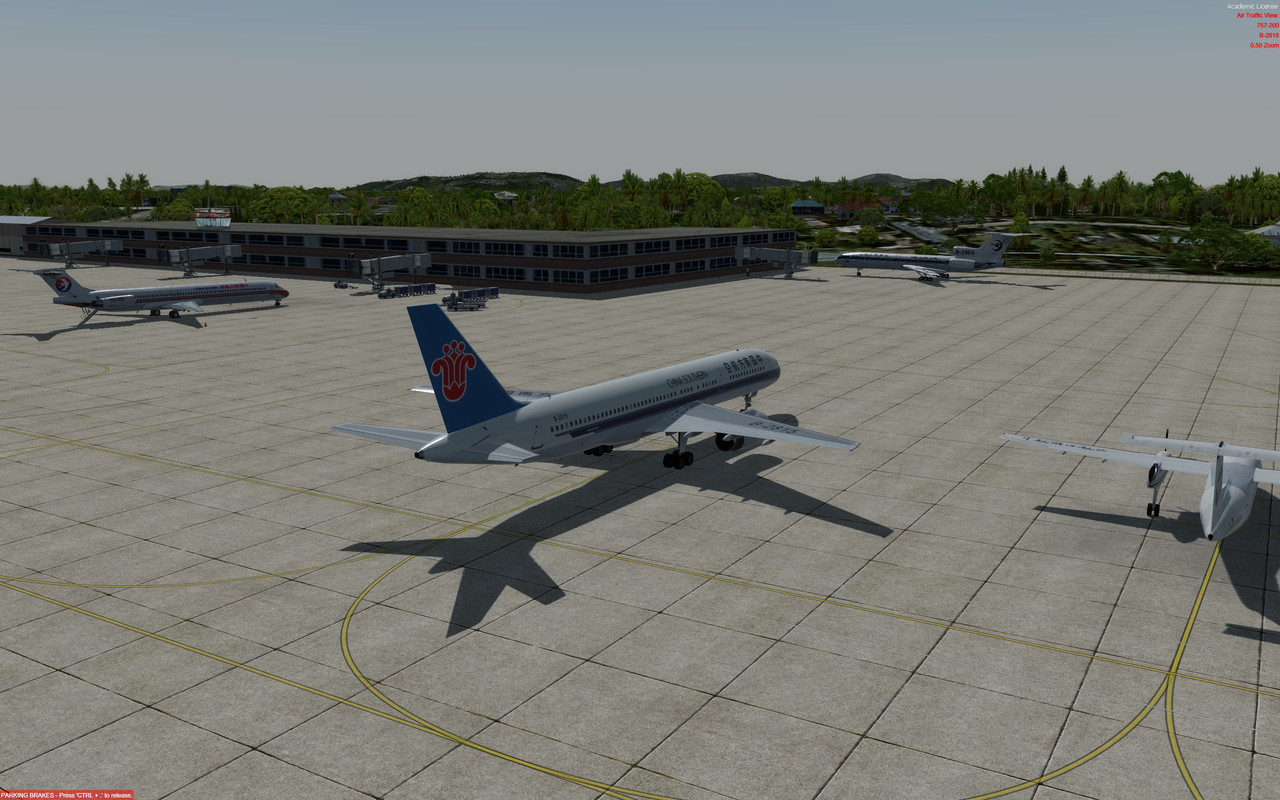 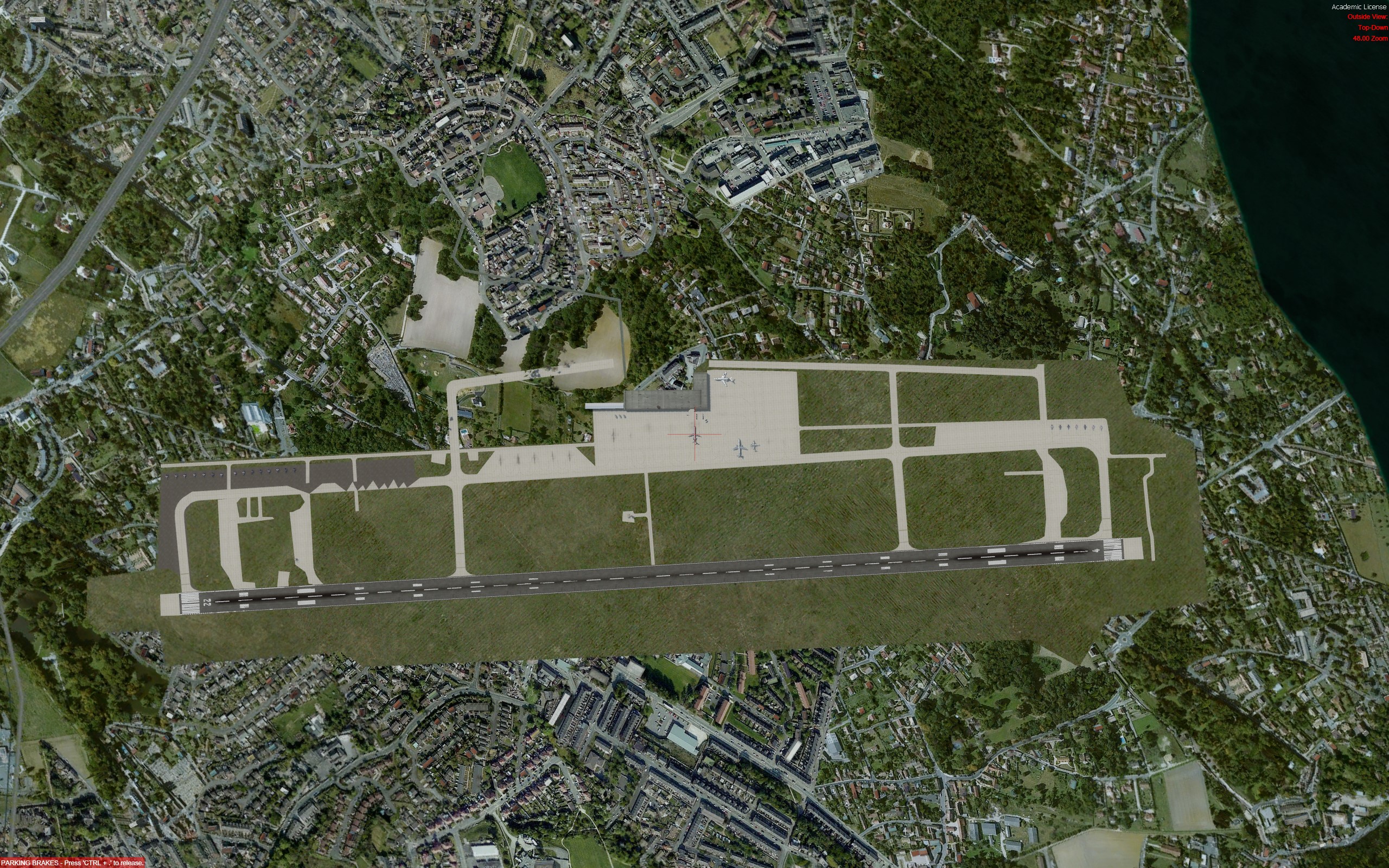 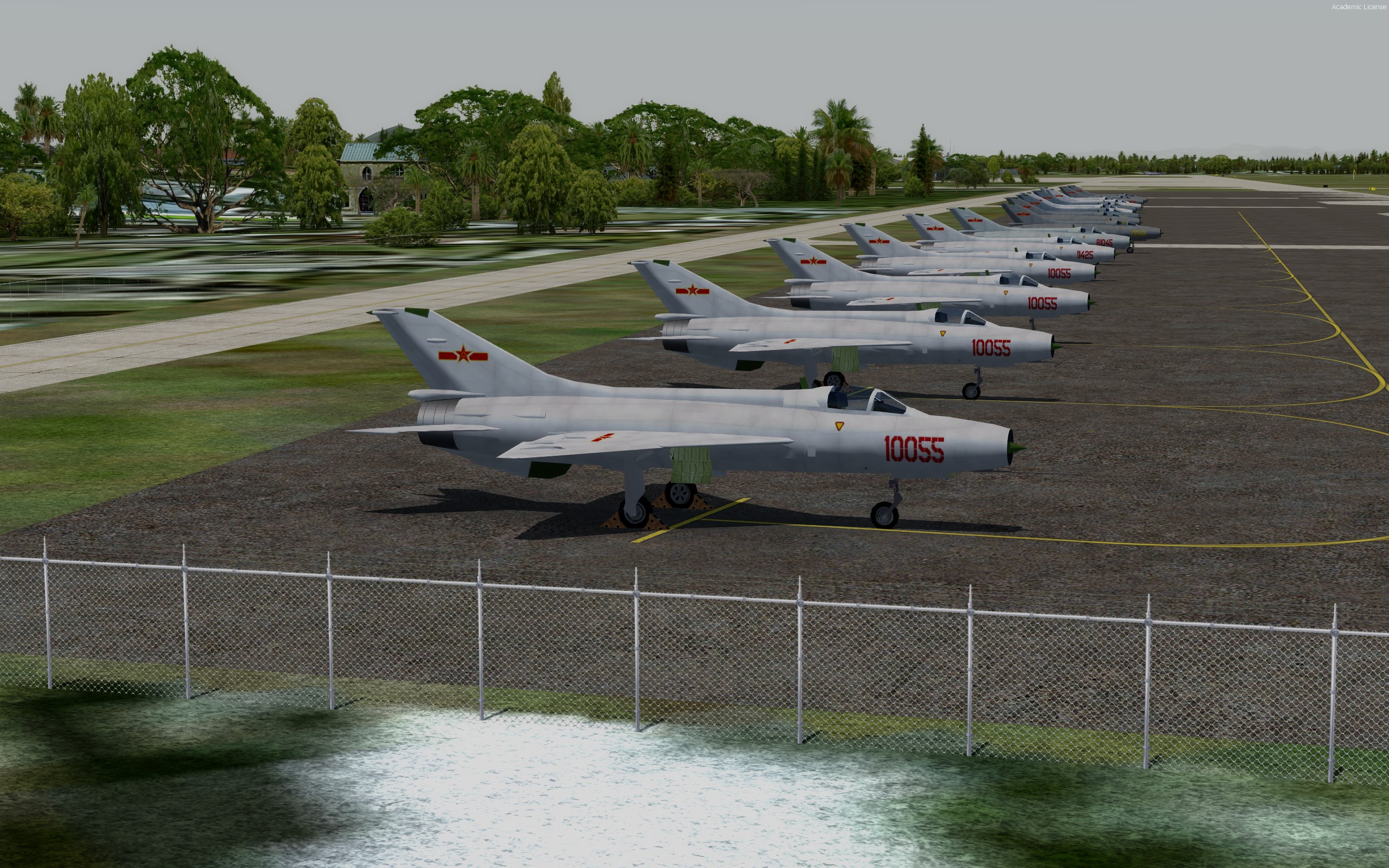 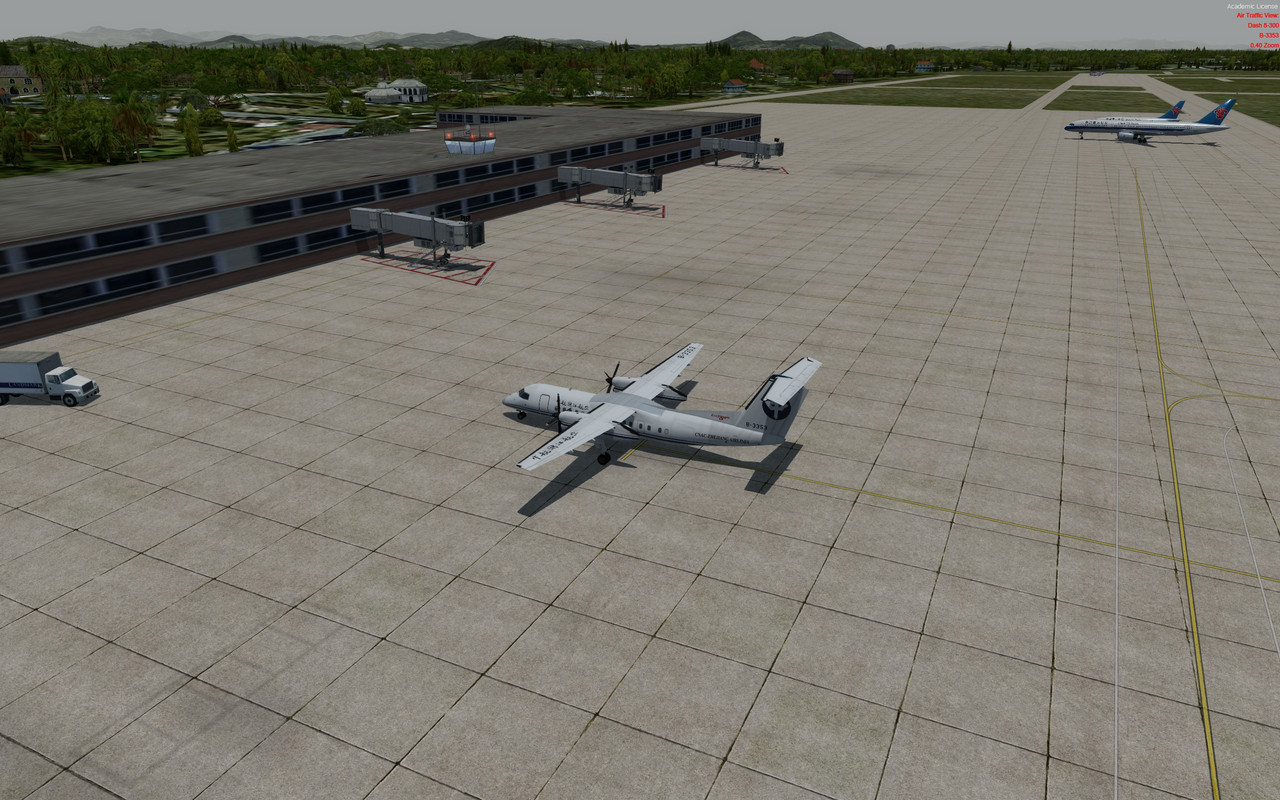 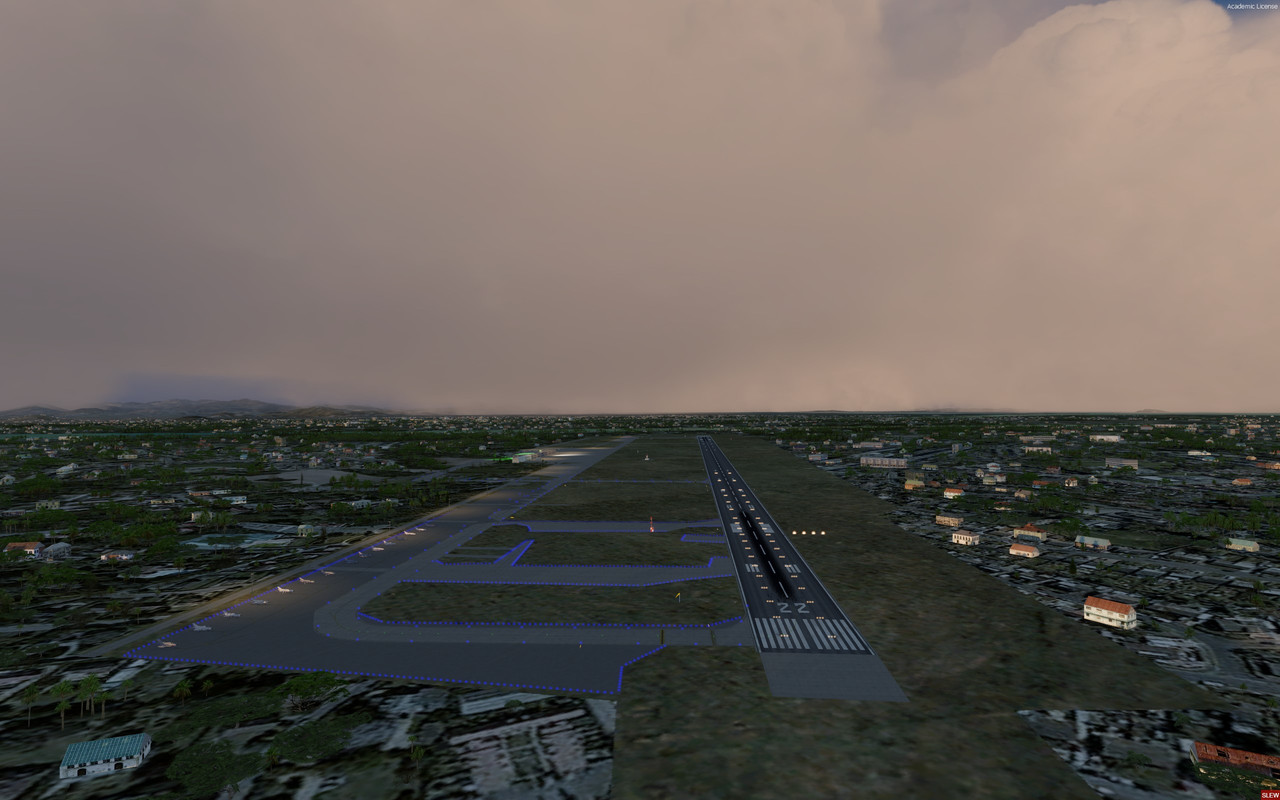  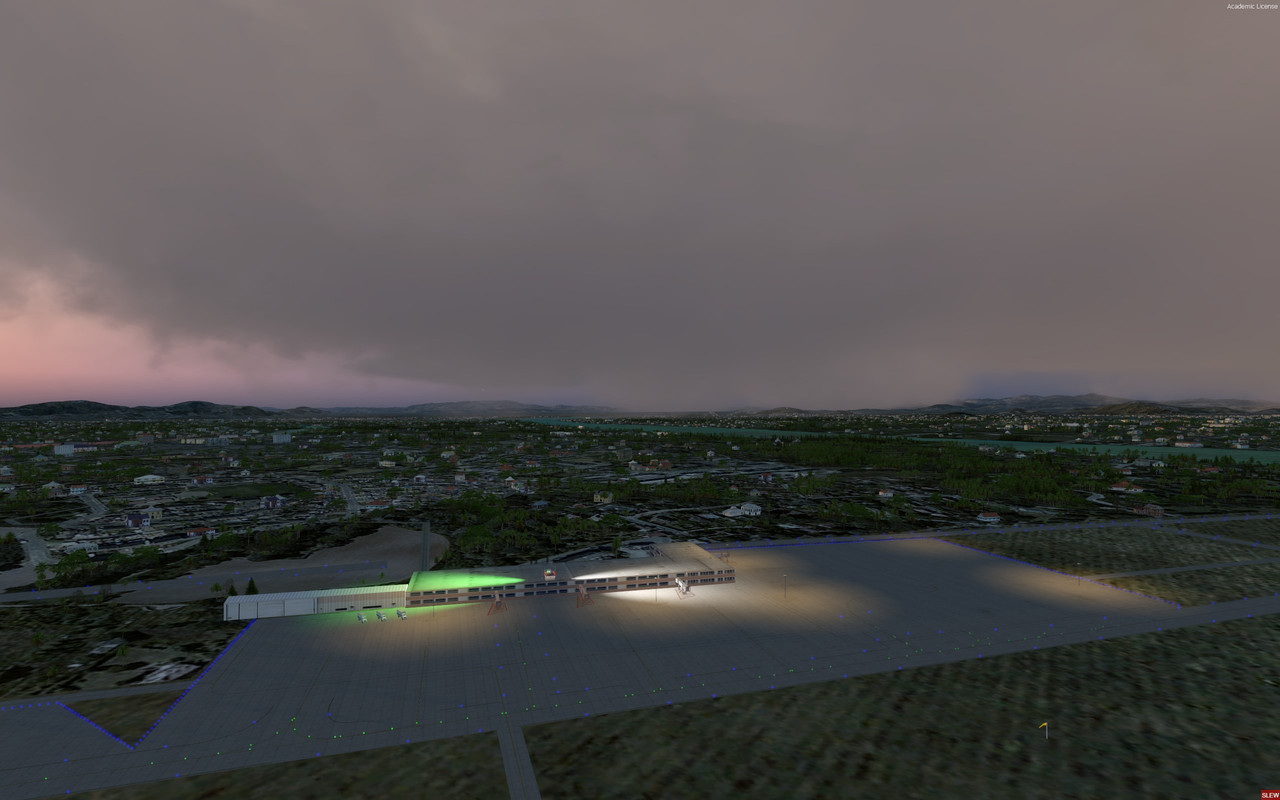 Download the ZGOX v2 1998 Scenery Here: drive.google.com/drive/u/1/folders/1scEmPsO4ocNOVcXZZ6B_aQHJ3PPUqnEm |
|
|
|
Post by chasensfo on Aug 29, 2021 0:55:13 GMT -5
\\Bejing Capital International Airport 1999 Beijing Capital International Airport IATA: PEK ICAO: ZBAA Location: Beijing, China Beijing Capital Airport is the largest airport in China and was Bejing's primary commercial airport for decades until Beijing Daxing International Airport (PKX) opened in 2019 with many flights moving over and the airport is eventually expected to become the primary international gateway to the nation. The airport had grown to be almost 5 times the size it was in 1998 with the opening of T2 in 1999 and several other terminals and parking areas in the years to follow and today is still one of the largest airports in the world. PEK is the headquarters of Air China and CAAC before it. In 1999, PEK was just starting its massive expansion, with the new T2 built and ready to open by year's end. Most flights were still regulated to T1, which opened in the late 1980s with 2 rotundas and a large remote parking area. One rotunda was built for medium-sized aircraft like 767s and A300s and smaller while the other had several gates able to accommodate 747s, though they had to park at unusual angles at some gates perpendicular to the terminal. The airport had 2 runways with a large remote parking area also used for cargo and general aviation flights. In addition to being the base of operations for Air China, PEK was a focus city or smaller hub for China Eastern, China Southern, China Northwest, and China Northern while most Chinese carriers had some kind of a presence at the airport. International traffic was steadily growing in China at the time, and the late 1990s brought significantly more international flights to PEK than the mid 1990s, with a sizable presence of Eastern European carriers and new non-stop 747-400 flights to several US cities from Northwest Airlines and United Airlines who previously routed their China traffic via Tokyo Narita (NRT). At any given time, the airport usually had dozens of planes on the ground by the late 1990s. This scenery is based off the default PEK scenery and reflects the layout of PEK in 1999 just prior to the opening of T2, with the terminal constructed and several construction cranes added to represent the terminal in it's last phase before opening. All terminal and gate parking and many ramp areas were totally re-done from scratch as were many taxiways while newer default taxiways, buildings, and parking areas were deleted. Airport signage and surfaces were updated and the airport vehicle roadways were toally re-done. All known parking is added and properly numbered, though limited sources for most Chinese airports prior to the 2000s left a bit of guess work in the remote areas admittedly. The terminal gates are coded to try to ensure that heavy aircraft usually use them before smaller ones, but as in real life, often the large jets end up on the remote stands regardless. The Air China hangar area was also added, which was closed to aircraft traffic very soon after. A future update will include dynamic lighting with lightpoles around the airport and a 2003 version with the new T2 open and T1 regulated to regional flights along with other changes. For GSX users, a GSX profile is provided to disable staircases at the jetway gates and to change the jetway models and textures to better reflect PEK at the time. It also changes the default GSX handler to Air China who was one of the largest ground providers at PEK at the time. Airlines serving Beijing in 1998/99: -Aeroflot -Air China -Air China Cargo -Air Great Wall -Air Kazakstan -Air Koryo -Air Koryo Cargo -Air Macau -Air Ukraine -Air Volga -Alitalia -ANA -Asiana Airlines -Atlas Air -Austrian Airlines -British Airways -Canadian Airlines -China Cargo Airlines -China Eastern Airlines -China General Aviation -China Northern Airlines -China Northwest Airlines -China Postal Airlines -China Southern -China Southwest Airlines -China United Airlines -China Xinhua Airlines -China Yunnan Airlines -Chitaavia -Dragonair -El Al -Ethiopian Airlines -FedEx -Finnair -Gemini Air Cargo -Fujian Airlines -Hainan Airlines -Iran Air -JAL -JAT Yugoslavia Airlines -KLM -Korean Air -Kyrgyzstan Airlines -LOT Polish Airlines -Lufthansa -MALEV -MAS -MIAT Mongolian -PIA -Northwest Airlines -Northwest Cargo -QANTAS -Royal Brunei Airlines -SAS -Shan Xi Airlines -Shandong Airlines -Shanghai Airlines -Shenzhen Airlines -Siberia Airlines -Sichuan Airlines -Singapore Airlines -Swissair -TAROM -Thai International Airways -United Airlines -UPS -Uzbekistan Airways -Wuhan Airlines -Xiamen Airlines -Xinjiang Airlines -Zhongyuan Airlines 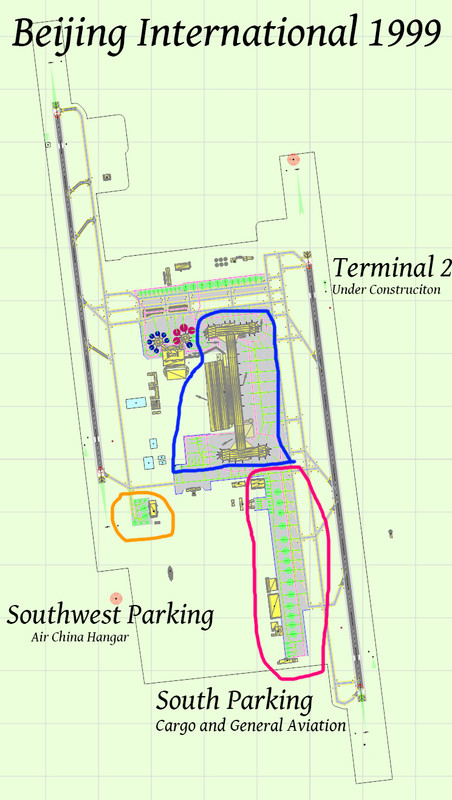  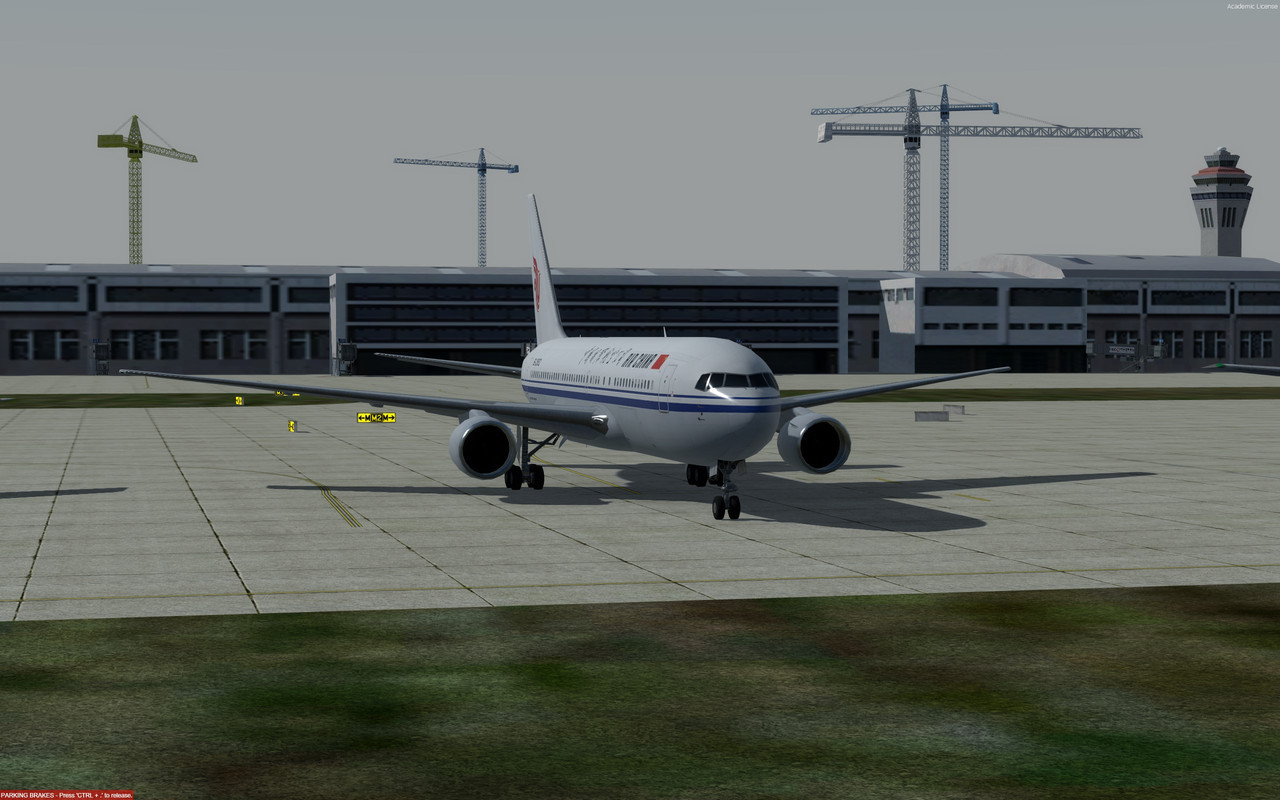   Download the ZBAA 1998 scenery here: drive.google.com/drive/u/1/folders/1ktq4mGpM9x2wR7IjKphbRgGqozs59Wcb |
|
|
|
Post by chasensfo on Sept 1, 2021 5:59:20 GMT -5
\\Ganzhou Huangjin Airport 1992-2008 v2 (04FEB22; Added Dynamic Lighting, re-did apron area for more space for aircraft taxiing and better ground markings, changed taxiway lighting, enhanced some areas) Ganzhou Huangjin Airport IATA: KOW ICAO: ZSGZ (ZSGX in the sim) Location: Huangjin, China The original Ganzhou Huangjin Airport, located near the village of Huangjin (after which it was named), was the small primary commercial airport serving the Ganzhou area located between Guangzhou (CAN), Xiamen (XMN), and Nanchang (KHN) until 2008. The airport was first built in 1930 as a very early Chinese airfield, then known as the Nanwai Airport, serving as an en-route tech stop mostly for some of the first air routes in Southeastern China. In 1936 during the growing military tensions predicating WWII, the airport underwent an expansion and was converted into a military base with a 2nd runway being added and the facilities enhanced for their new role. During WWII, the airport was renamed "Kanchow (Kan Hsien) Airfield" and was an important base for US Army Air Force 14th Air Force participating in the China Theather, with P-51 Mustangs, B-25 bombers, and P-38 Lightning fighters operating in important photo-reconnaissance roles all based at the airfield. When the war ended, the US forces quickly departed in 1945, and the airfield sat mostly vacant until commercial flights resumed in 1959 with the airfield renamed Ganzhou Huangjin Airport. Thie re-opening to commercial flights with modern facilities made ZSGX one of the first official commercial airports in China. The new layout had the small apron, with parking for just a few commercial aircraft and some additional parking for small general aviation visitors, connected to the rather narrow runway via a single taxiway intersecting the runway in its center. This design meant all flights had to make 180 degree turns for departure and after landing. Commercial flights were again suspended soon after but resumed after the Chinese Cultural Revolution. From 1970 to 1981, the Chinese military took over control of the airport, though the few weekly commercial flights continued to operate. Once control of the airfield was again transferred to the civilian aviation authorities, most military activity at the airport ceased. In 1987, the narrow runway was modernized to better suit the large turboprops serving the airfield and the apron and facilities were expanded. In 1992, the airport underwent its final expansion, expanding the runway to over 7,000 feet to allow for aircraft as large as the 737 to operate there while the runway was also widened to a standard size more acceptable for larger jets making the turn around at either end of the runway. Despite the lengthening of the runway, and the expansion to allow for 2 737-sized parking spots and 2 regional jet-sized parking spots, the airport was very dead in the 1980s and most of the 1990s. After the 1992 expansion, Air China began 2 pure-jet routes with its new BAe-146-100s launching a few weekly flights to CAN and KHN. As older props began to retire across China quickly in favor of modern jets after the break of CAAC into many smaller carriers, the airport lost most of its limited service, as well as the jet route to KHN. In 1998, the airport had just 2 scheduled commercial flights per week, with a mid-afternoon Air China BAe-146-100 flight from Guangzhou (CAN) operating on Wednesday and Sunday only. Despite this, the airport did have general aviation and military transport visitors each week as well, but it was rarely if ever busy. In 2001, the airport was renamed "Civil Aviation Ganzhou Golden Airport", with locals often referring to the old airport as "Golden Airport", and flights began to slowly increase around that same time, followed by a spike in traffic in the early 2000s with several new airlines starting service. By the mid-2000s, the surrounding farmland had quickly been consumed by urban sprawl, and the increased population brought with it 737 and regional jet flights by several airlines to larger Chinese cities, though service remained slow during the day. With just 4 gates, it didn't take long for the airport to fill up at peak travel times and buildings now surrounded the airfield preventing expansion. Construction of a new medium-sized airport with room for expansion located in Emei Village, just outside of Ganzhou, began in 2003 to replace the old airport. On 25MAR08, a China Eastern ERJ-145 arriving from CAN and departing to XMN operated the last flight out of the airport, and all flying activities immediately transferred to the new airport, also named the "Ganzhou Huangjin Airport". The Golden Airport was very quickly demolished and renovated to make room for residential and industrial expansion, and today no traces of the old airport remain. The new airport can handle larger aircraft such as the 757, A321, and 737-900, but remains a smaller commercial airport in terms of operations. This scenery recreates the Ganzhou Huangjin Airport as it looked in its final stage from 1992 to 2008, with all buildings, surfaces, parking, airport objects\signage, fencing, lighting, and roadways included using generic library objects (for now). Since the airport is small and thus easy on frame rates, various objects like cars and other small things were added to enhance the scenery (all on "DENSE" settings). Both large turn-out areas added to either end of the runway are included along with windsocks in the proper spots. In real life, the airport had a unique little terminal with the tower attached and I plan to try and create it along with adding light poles with dynamic lighting in the future. Ganzhou Huangjin Airport is a short flight from Hong Kong (HKG) and several large cities in China and did see charters to places like Macau, so there are many realistic short flights that can be performed to this airport including the scheduled service from the now-closed CAN airport (1998 version coming soon) with the BAe-146. The small runway and layout make the airport a bit challenging to operate in any jet airliner. In the future, an update to the China Air Force 1998 flightplans will add visits by transport aircraft to this airport and flights by Chinese general aviation, charter, and ad-hoc cargo companies will add more retro flights to this airport. All 1998 project flightplans are already coded to use this old airport. No GSX profile is included as there were no jetbridge gates or other tweaks needed. This scenery represents the airport from its final expansion in 1992 to its closure in 2008, though it will be a fine representation of the 1980s as well. I recommend using 2003 traffic with this scenery as the airport is much more active. Airlines Serving Ganzhou between 1992-1998: -Air China -China United Airlines Airlines Serving Ganzhou in 2003: -Air China -China Southern Airlines -China United Airlines -SDA Shandong Airlines -Shanghai Airlines 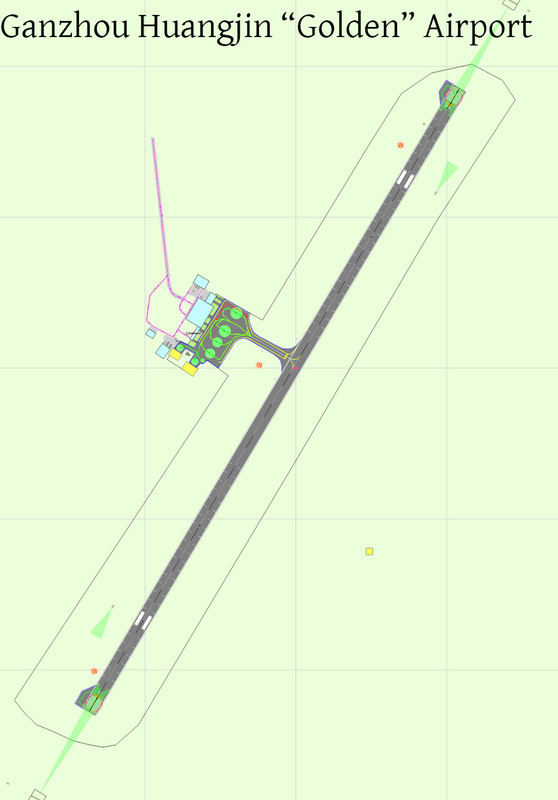 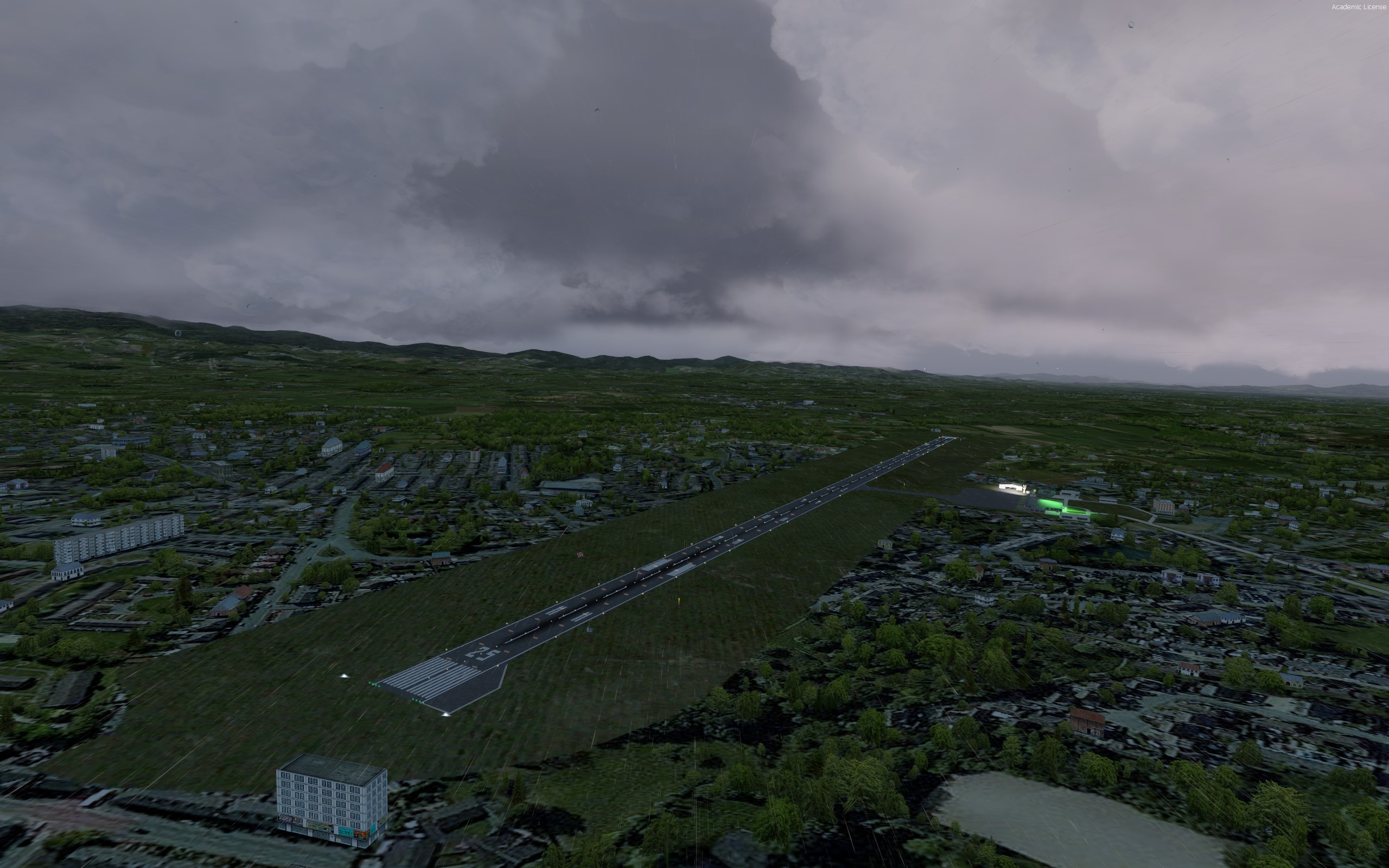 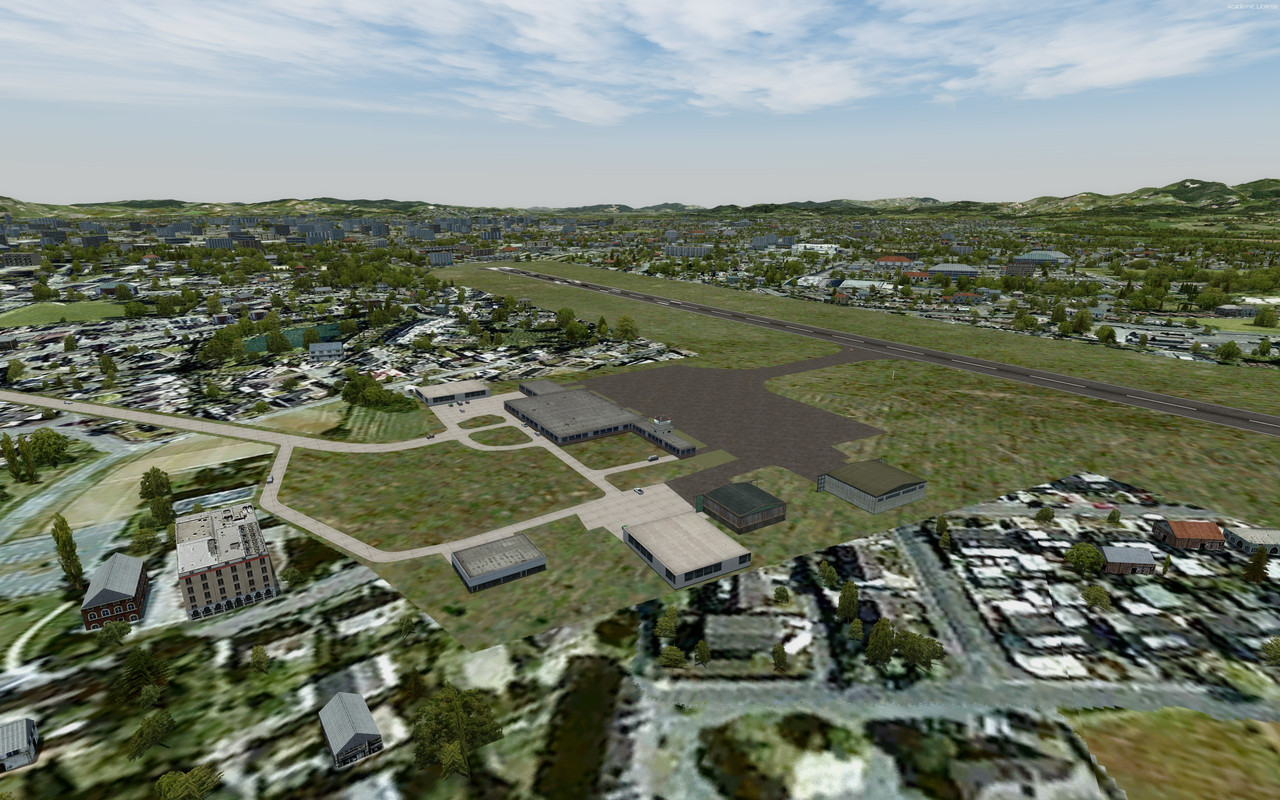 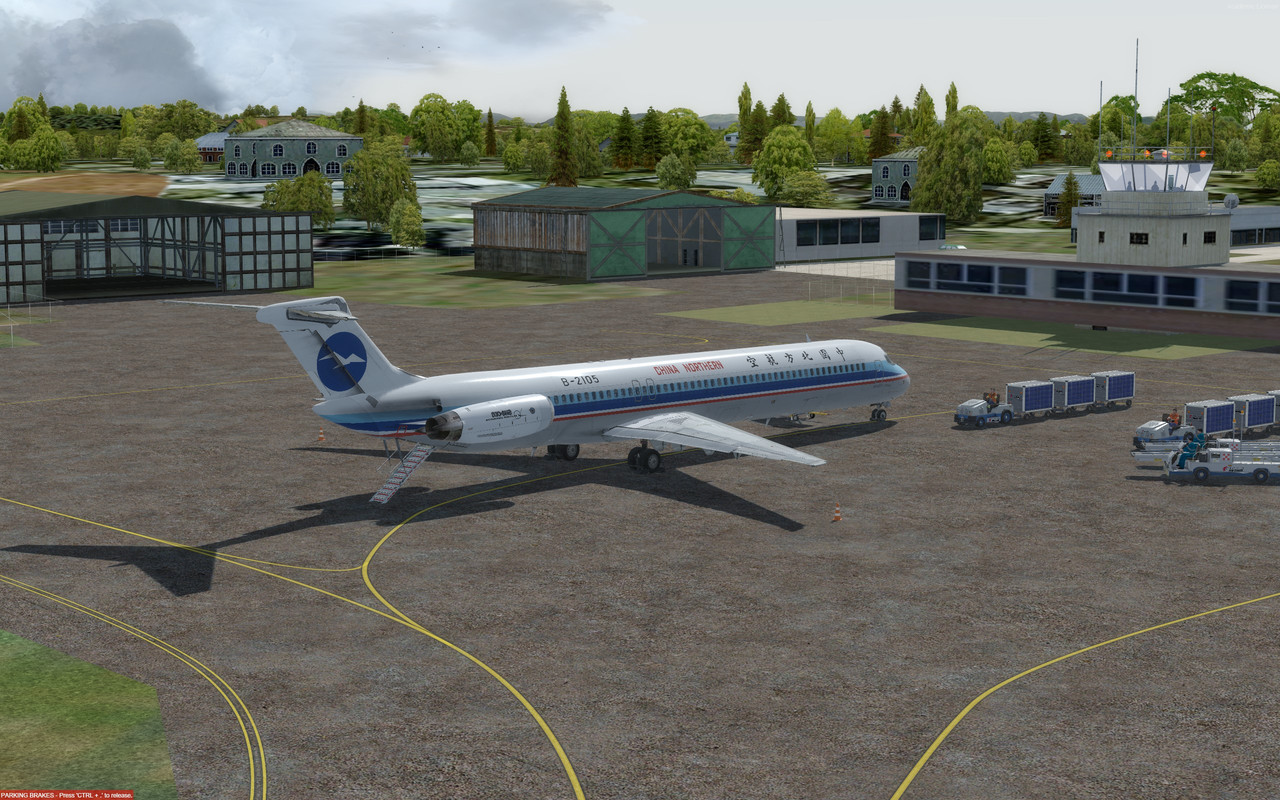 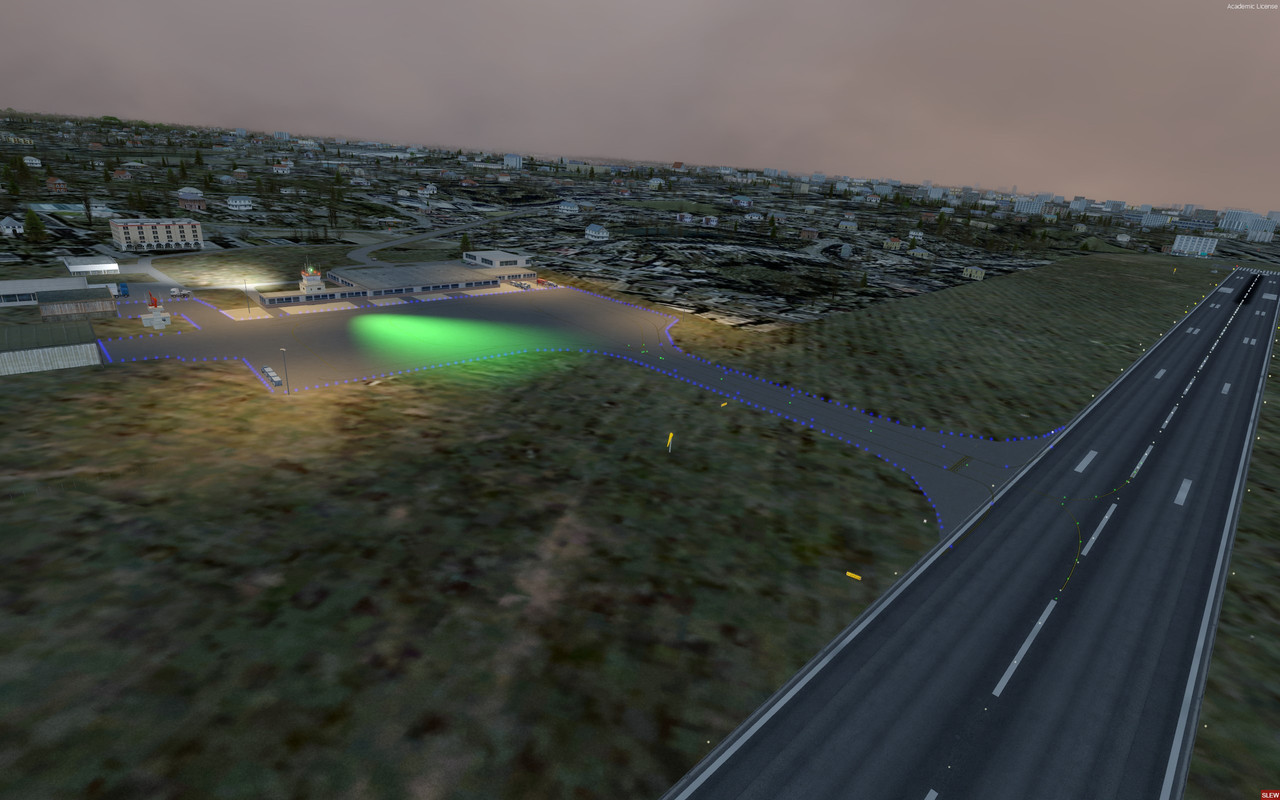 Download the ZSGX 1992-2008 v2 scenery here: drive.google.com/drive/u/1/folders/1OIumOEL9vG5csO9FPs886h1ZtIFjCKs0 |
|
|
|
Post by chasensfo on Sept 2, 2021 6:13:59 GMT -5
\\Hangzhou Jianqiao Airport 1990-2000 v2 (UPDATE 04FEB22; Added dynamic lighting, fixed various small issues, re-did the taxiway\apron lighting, re-did the airline terminal for better parking, more space taxiing and ground markings) Hangzhou Jianqiao Airport IATA: HGH ICAO: ZSHC (ZSHX in the sim) LOCATION: Jianqiao, China (serves Hangzhou) Hangzhou Jianqiao Airport, located in the town of Jianqiao, China just outside of Hangzhou not far from Shanghai (SHA), was the primary commercial airport for Hangzhou until 2000 when the Hangzhou Xiaoshan International Airport opened and all commercial flights transferred over. Today, the airport remains active as a large military airfield having undergone large renovations since the closure of the airport to airline traffic. Hangzhou Jianqiao Airport was one of the first active airfields in China, opened in 1922 by a Chinese fighter pilot ace who had participated in WWI and a Chinese War Lord who decided to open a flying school. In 1931 as tensions mounted with Japan, the airfield was taken over by the military and became an important base during WWII with many major air battles happening in the area between 1937 and 1945 (inspiring a Chinese movie about the airport in WWII called "Heroes of the Eastern Skies [or Heroes of Jianqiao]"). After WWII, the airport remained in the hands of the military for over a decade as commercial flights were slow to pick up in China, which was still considered a 3rd world nation at the time. In 1956, the airport underwent renovations to receive commercial airline traffic and passenger facilities were built with the first commercial flights beginning in 1957, though the military maintained a large presence at the airfield. CAAC, the predecessor to Air China, expanded to add various routes out of the airport over the next decade as Hangzhou began to grow into a large city. Being a poor nation at the time that was largely unindustrialized, a planned visit to Hangzhou by US President Richard Nixon in 1971 was a huge deal for the city, and the airport underwent a large expansion to take on the layout of its final form ahead of his visit in Air Force One, then a VC-137B (Boeing 707). The airport grew into a solid medium-sized commercial airport, while military activities also expanded with dozens of fighter jets based at the airfield. CAAC began flying various early jets into the airport which had mostly seen older turboprops prior to the expansion. The final upgrade to the airport before its closure to airline traffic occurred in 1990, just after the break up of CAAC into many smaller carriers which saw a large increase in flights to ZSHX, with the runway being expanded to 10,500 feet and widened to allow for the arrival of wide-body jets. When the airport reopened after the runway extension, a new airline was founded by the Chinese National Aviation Holding (CNAC) known as "CNAC Zhejiang Airlines" and was based in ZSHX first operating DHC-8-300s and later adding Tu-154s, A320s, and A319s. Through the 1990s, various airlines operated dozens of routes to the airport, including Dragonair which started international flights to Hong Kong (HKG) during that decade. By 1998, though nowhere near as busy as nearby SHA or Beijing (PEK), the airport was one of the busiest in China both in terms of passenger flights and aircraft movements thanks to the large presence of a few squadrons of J-7 Skybolt fighter jets. Though some jets were parked in areas near the passenger terminal, the main military areas were kept separate from the passenger operation, with a treeline built to hide the view of most of the area from the airline terminal and the taxiways far too narrow for airliners to enter. Zhejiang Airlines had leased some Tu-154s from Baikal Airlines at this time which were based out of ZSHX making for some interesting traffic, while China Eastern Airlines had the most flights. The airport didn't get many larger airliners until the late 1990s, but as China grew at an explosive rate, China Southern was operating daily 777-200s to Guangzhou (CAN) by 1998 and there were also 757 A300s, and 767s serving the airport each day. Singapore Airlines had also recently started A310 service to Singapore (SIN). China Southern had grown into the dominant carrier at this time, though China Eastern maintained a strong presence and Zhejiang Airlines had expanded as well. There were no jet bridges and both passenger and cargo aircraft shared a large apron built around the passenger terminal, with general aviation and government flying service areas off to the side. Smaller aircraft parked at an angle right outside the terminal while most larger aircraft parked some distance away off the main taxiway. In 1999, the airport would set a passenger record handling almost 2.2 million passengers with flights to 46 cities. As the airport approached its maximum capacity, construction started on the much larger Hangzhou Xiaoshan International Airport in 1997 across the river from Jianqiao. On 29DEC00, all commercial traffic was transferred to the new airport along with the IATA and ICAO codes. The Chinese military wasted no time transforming the airport into a complete military facility and there was no trace of the passenger area with large changes to the layout completed within the first year or so of the closure. Today, the new airport is one of the largest in China which even briefly held non-stop Boeing 787 flights to San Francisco (SFO) by United Airlines, and the old airport remains an active military base today. Though the airport exists today, many airfields in China were excluded in Prepar3D and this airport did not exist. I have built the airport from scratch with all known aircraft parking included along with all taxiways, ramp areas, the trees planted around the main military area, and most buildings along with many objects and all proper runway and taxiway signage. All objects used are default objects. My China Air Force 1998 flight plans using paints by Michael Pearson will add a large number of Skybolt fighters based in ZSHX to the airport doing touch and goes in 2-4 ship flights throughout the day. A future update to those flight plans will include transport aircraft as well. The airport was at its capacity in the late 1990s, and urban sprawl had surrounded the airport though this is not modeled in Prepar3D. I will eventually add many buildings around the airport to make it feel more congested as it was in real life, along with light poles and dynamic lighting in the future. This scenery represents the airport from 1990-2000. All 1998 project flight plans already use the ZSHX code. No GSX profile is included as it wasn't needed. This scenery represents the airport from its final major civilian expansion in 1990 until its closure to civilian traffic in 2000, but it is a fine representation of the 1980s as well for now. Airlines serving Hangzhou in 1998: -Air China -Dragonair -China Eastern Airlines -China Northern Airlines -China Northwest Airlines -China Southern Airlines -China Southwest Airlines -China United Airlines -China Yunnan Airlines -CNAC Zhejiang Airlines -Fujian Airlines -Shanghai Airlines -Singapore Airlines -Xiamen Airlines -Xinjiang Airlines   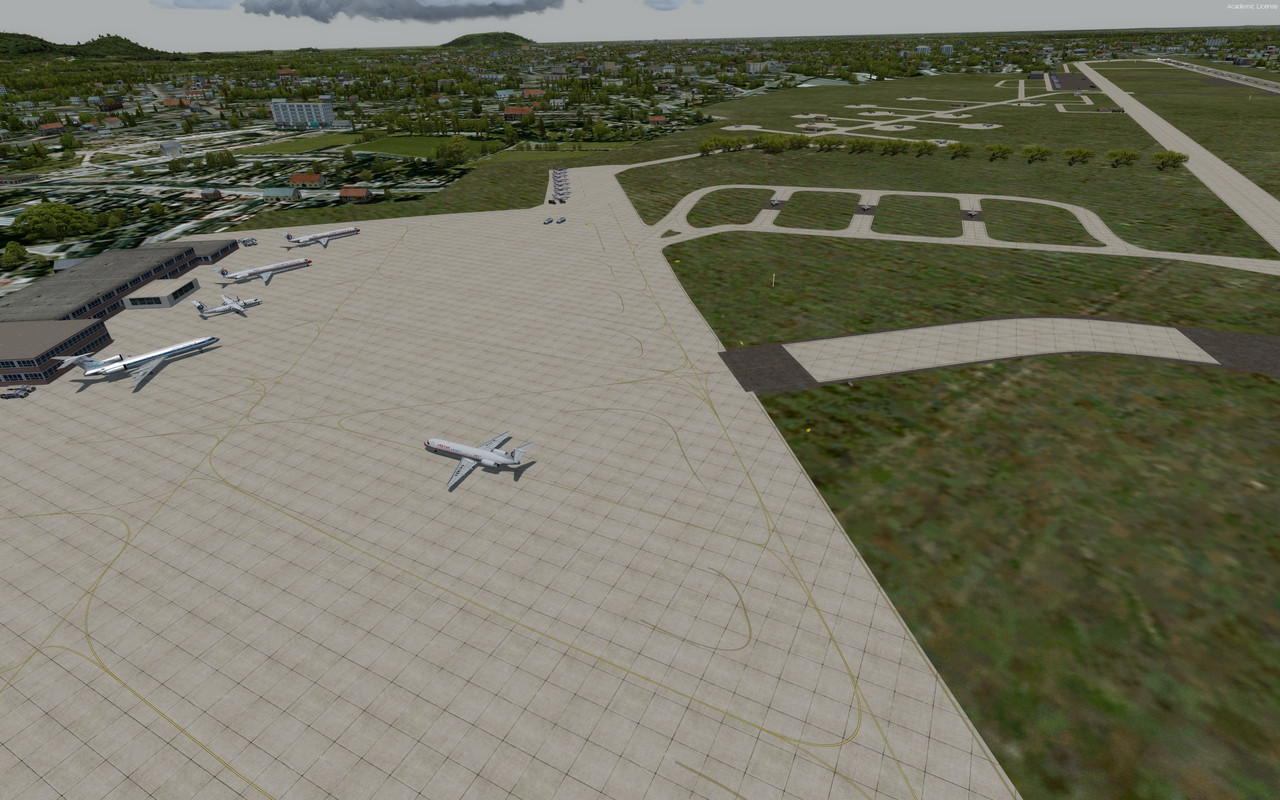   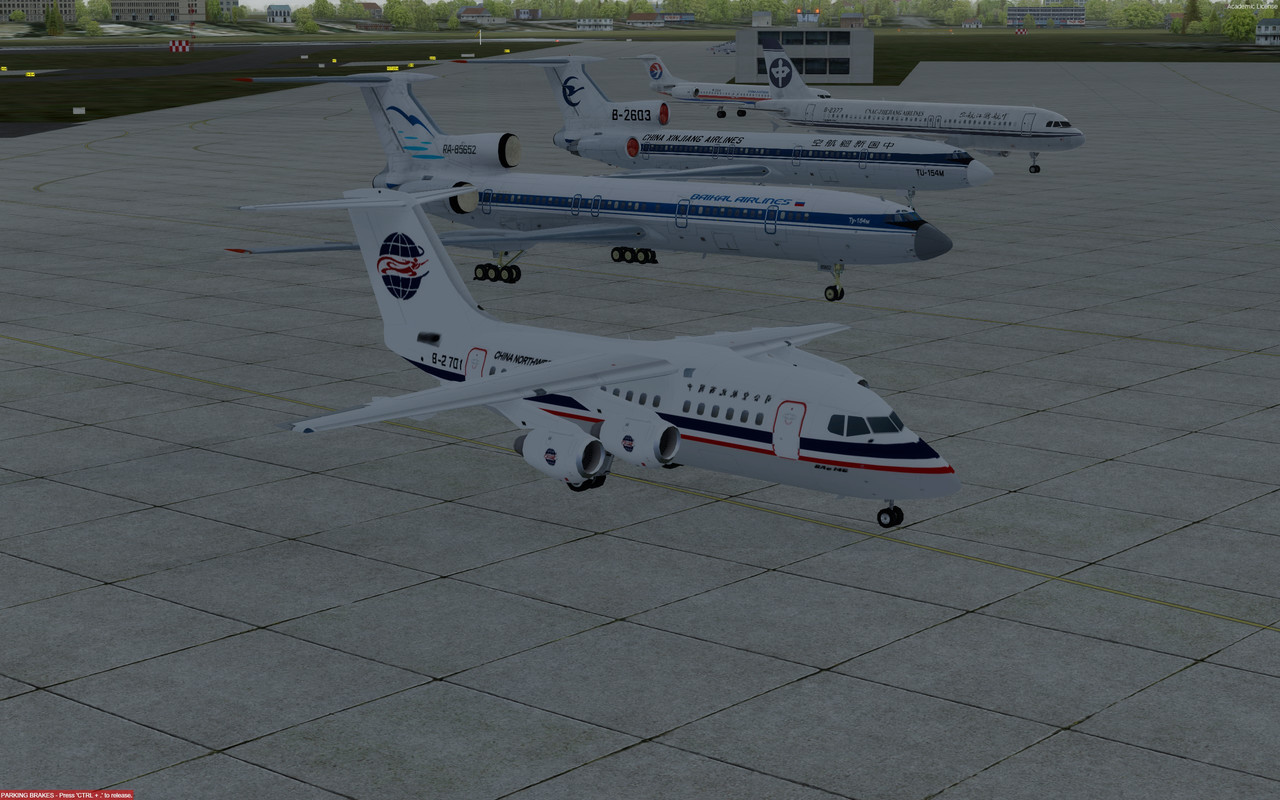 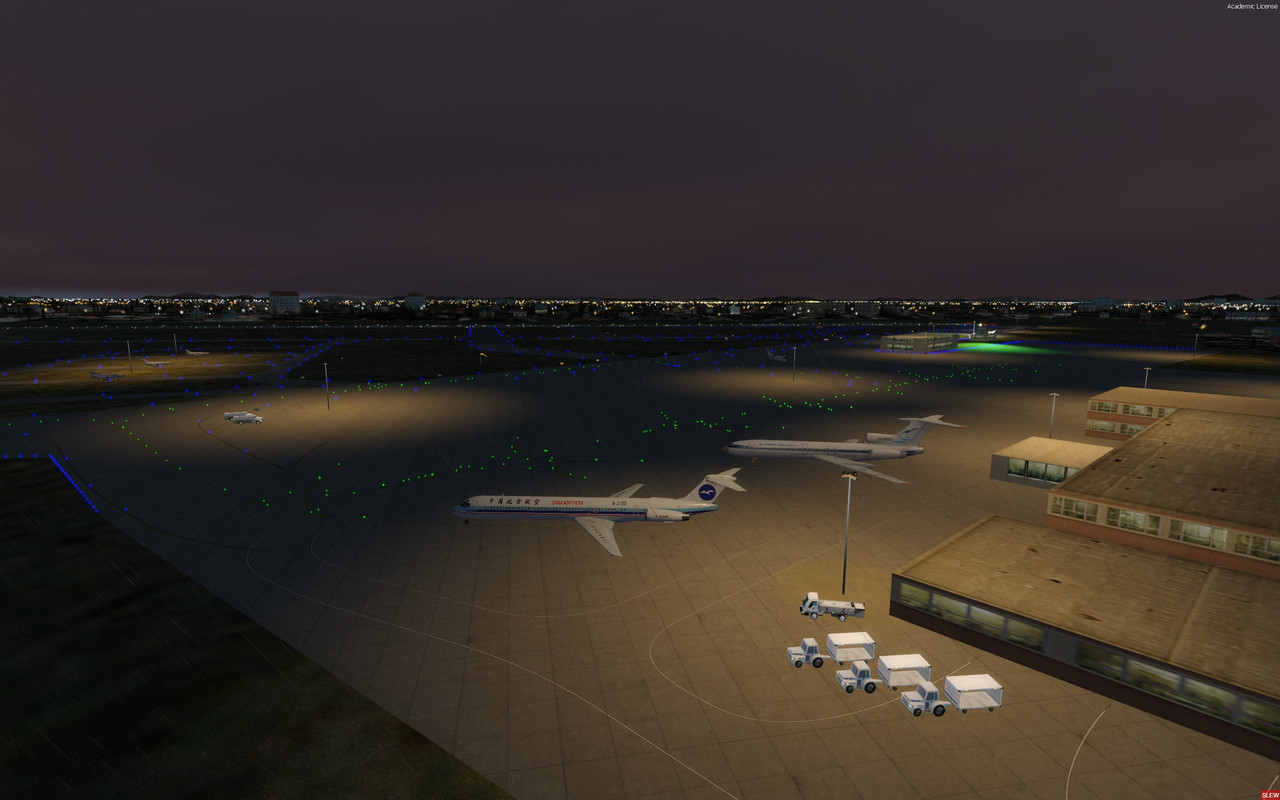 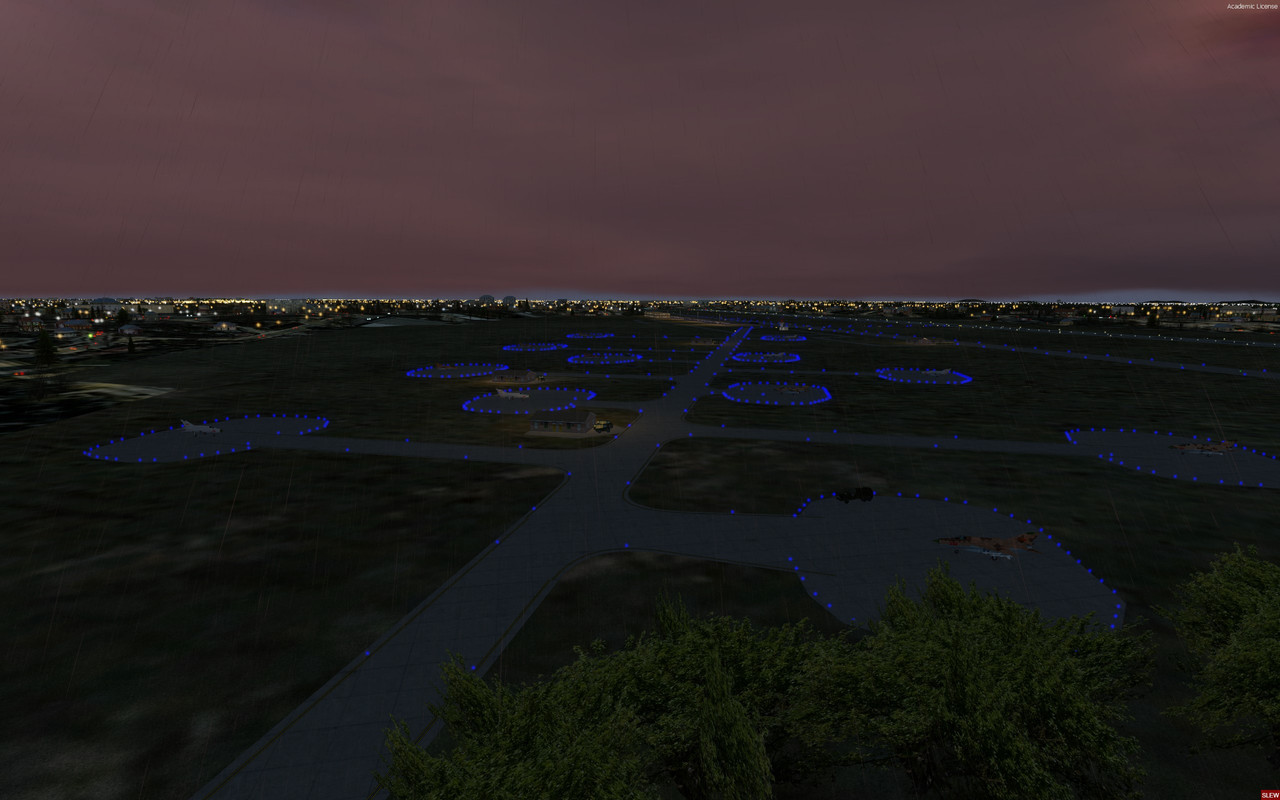 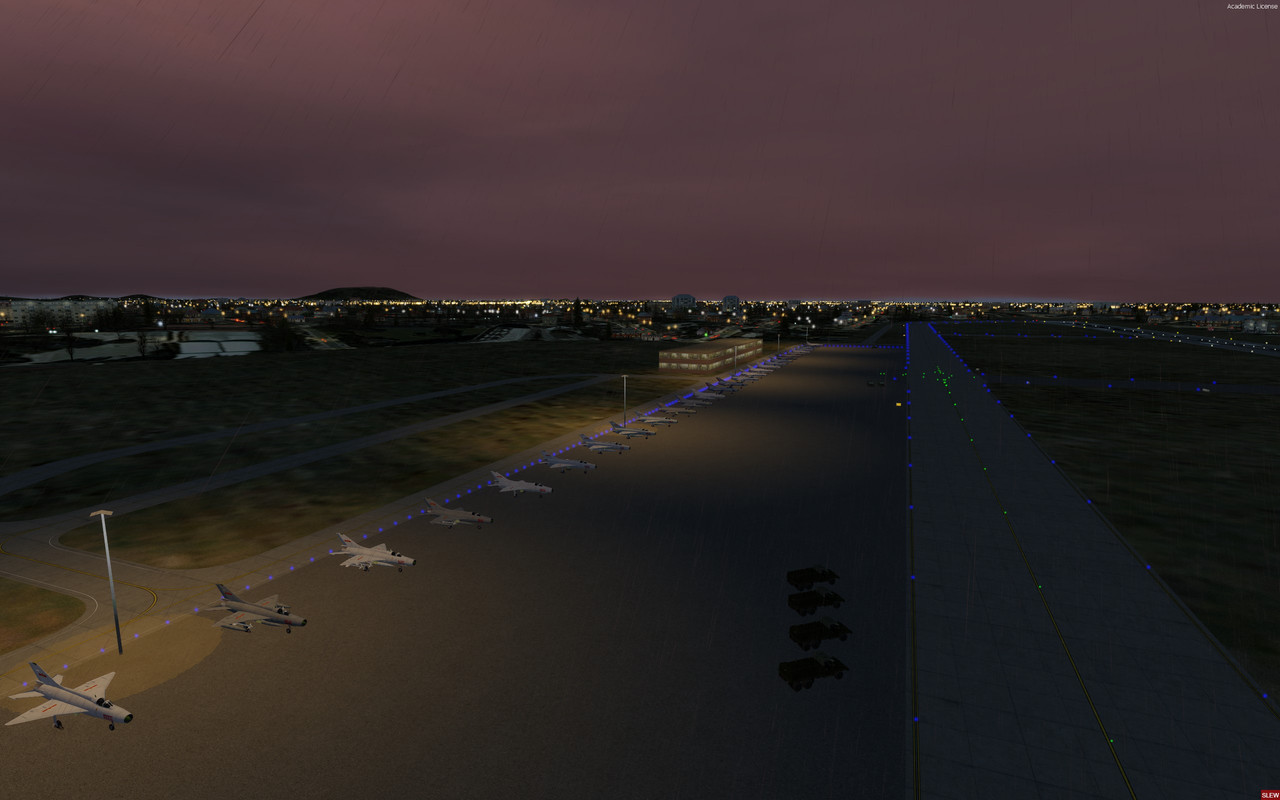 Download the ZSHX 1990-2000 v2 Scenery Here: drive.google.com/drive/u/1/folders/15Hf0wuvtgBOfKSUGYRcHZR57_Y24IQwn |
|
|
|
Post by chasensfo on Nov 29, 2021 7:27:55 GMT -5
\\Toronto Pearson International Airport 1998 IATA: YYZ ICAO: CYYZ LOCATION: Toronto, Canada Airlines Serving Toronto in 1998: (will add later) Toronto Pearson International Airport is the largest airport in Canada and one of the largest international ports in North America and the main base of operations for several Canadian carriers, including Air Canada. For decades, YYZ has attracted service from a wide range of global carriers as well as frequent service from many US carriers. Historically, the majority of Canadian carriers have had a presence at YYZ. In 1998, YYZ served as a major hub for Canadian Airlines, Canada 3000, Royal Aviation, Air Transat and Sky Service and was also the main operational base for Air Canada. Both Air Canada and Canadian had large maintenance facilities there at the time and Air Transat also had a hangar. The runway layout was the same as today, but there were less taxiways and no mid-field terminal. Terminal 1, since demolished, housed most US carriers along with most charter carriers and international carriers not aligned with an alliance or massive codeshares and most commuter flights. Terminal 1 had a large parking garage in the center of it (which was very famous with planespotters) and was a satellite terminal only accessible via an underground tunnel. Several piers had 2-3 gates each on them or had parking for several commuter planes between them. Terminal 2 was rather new and was used primarily by Air Canada and it's Star Alliance partners as well as some European carriers outside of the alliance but often ground handled by Air Canada. Terminal 3 was split into 3 concourses, known as A, B, and C. Concourse A was a satellite concourse located next to a large Canadian Airlines hangar and was used by Canada 3000 and Canadian's regional partners. Concourses B and C were primarily mainly used by Canadian Airlines and American Airlines, who had a massive codeshare with Canadian having owned 49% of the company at the time and thus had frequent flights to it's US hubs, but also some of the more established European airlines and those who would eventually form the oneworld alliance soon after. Large general aviation and parking areas were located near the current location of the mid-field terminal and FedEx had a small ramp at the time near the larger hangars. The parking area in the Northwest corner of the airport was used by various smaller operations and also had an Air Transat hangar. This scenery was based off the default CYYZ scenery but several areas and Terminal 1 were built from scratch with all post-1990s taxiways, terminals, ramp areas, signage, and buildings removed. All roadways were re-done and the construction of the terminal which would later replace the old Terminal 1 is represented with cranes around the new parking structure that was just being finished at the time. Gates and parking assignments reflect the real 1998 layout. At the time of posting, most large Canadian carriers are completed. After the Air Canada and Canadian commuters along with Royal Aviation and Skyservice are completed, the rest of the missing flights to YYZ will be added to the incomplete airlines files to create the rest of the real traffic. A GSX profile will be added in the future with proper jetbriges and logos as well as proper 1998 ground equipment for Canadian and Air Canada who handled most flights. A 2003 version is also in progress and mostly started, I will release it in the future.   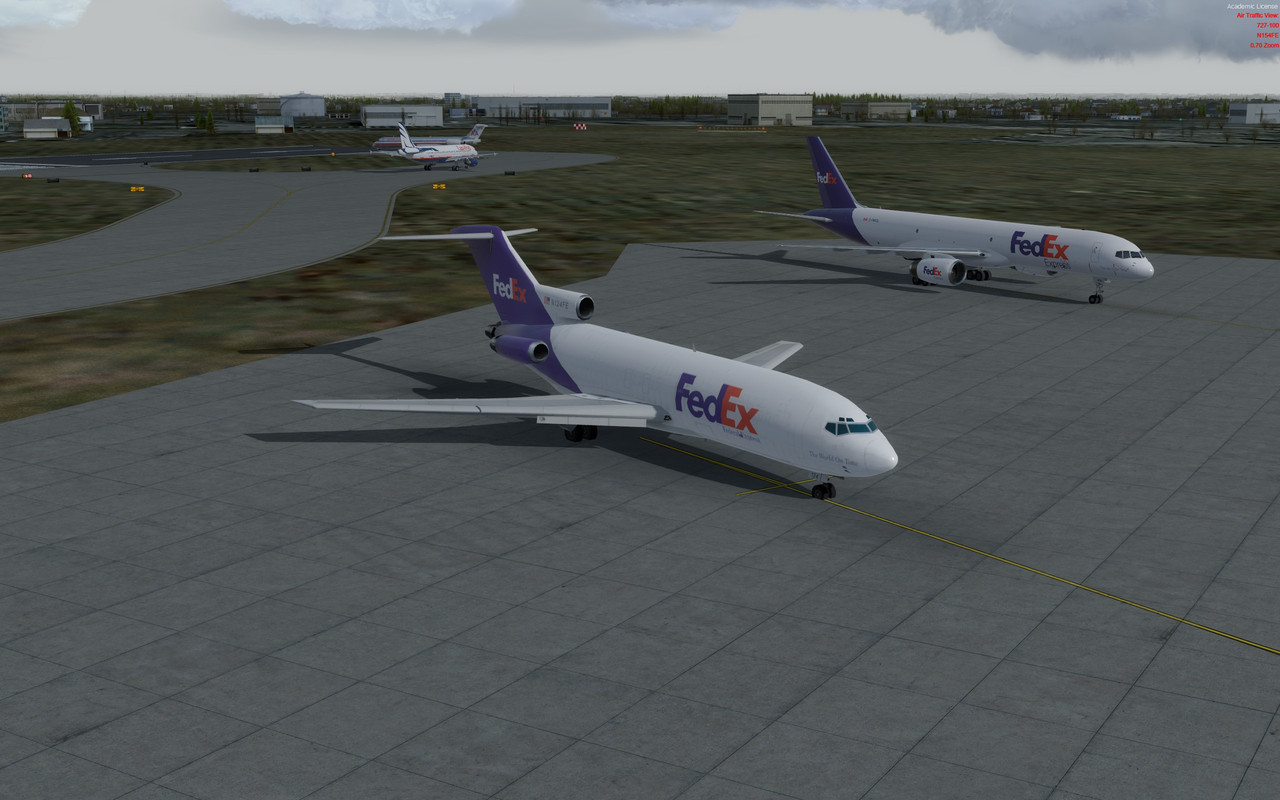 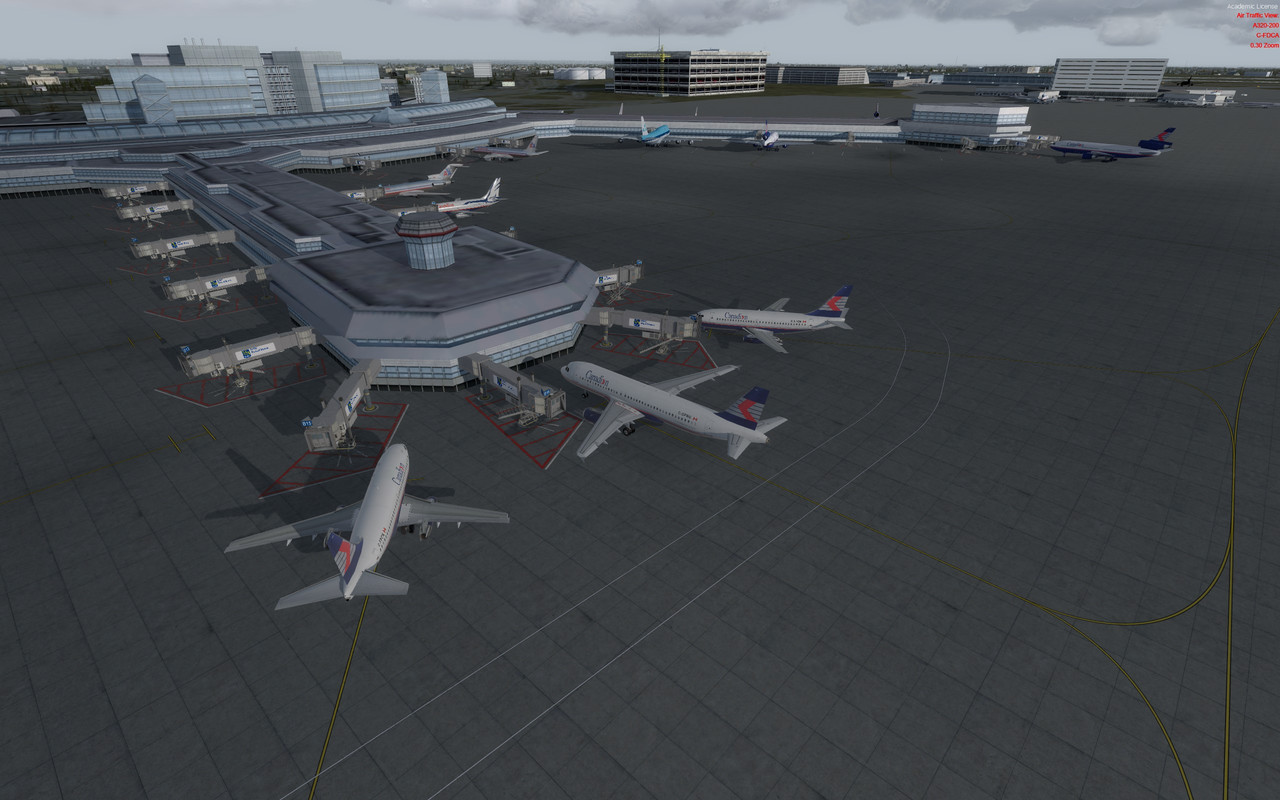 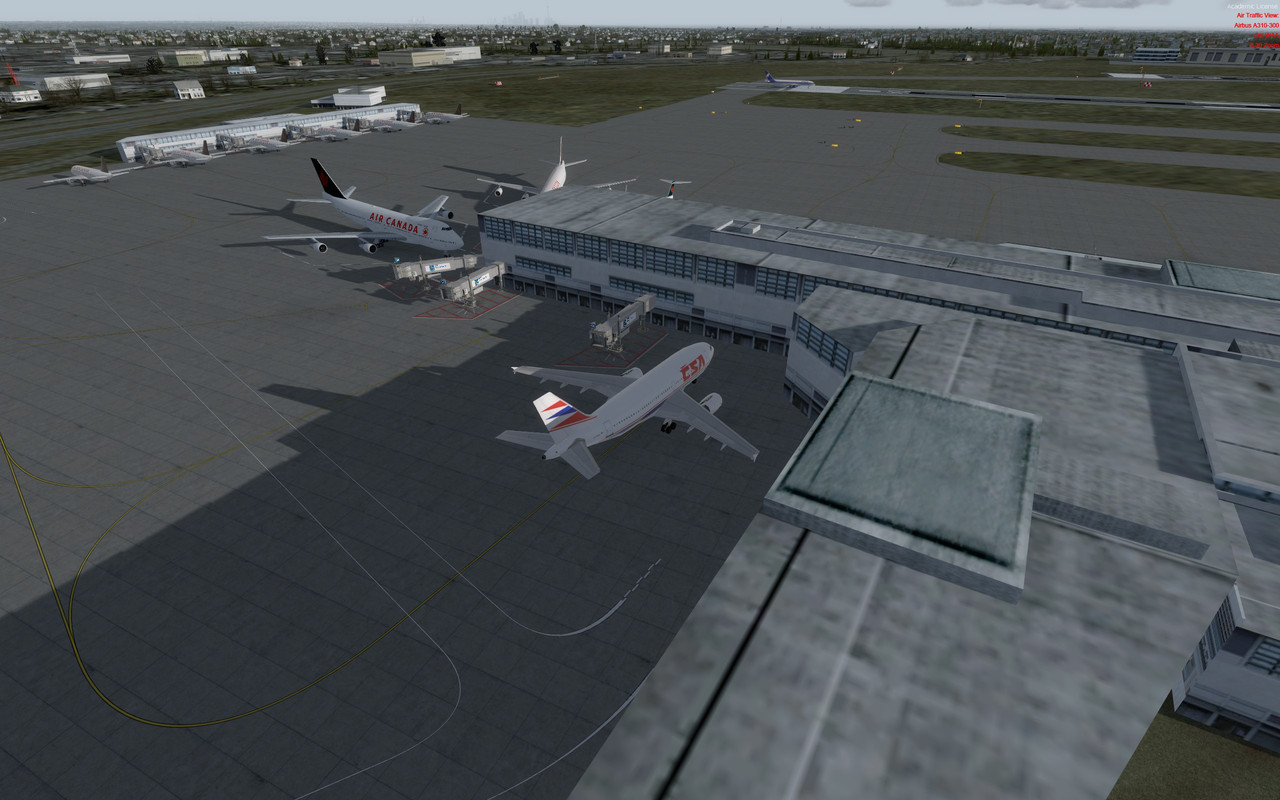 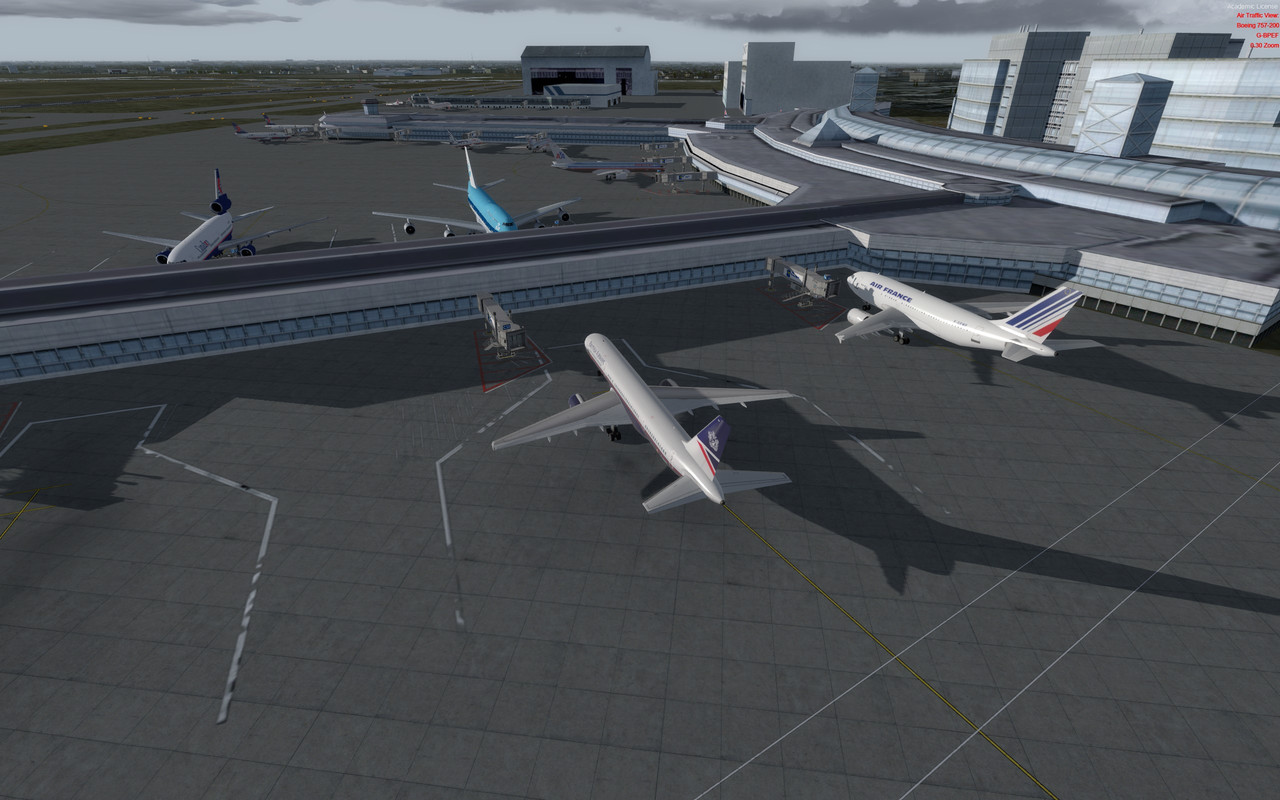  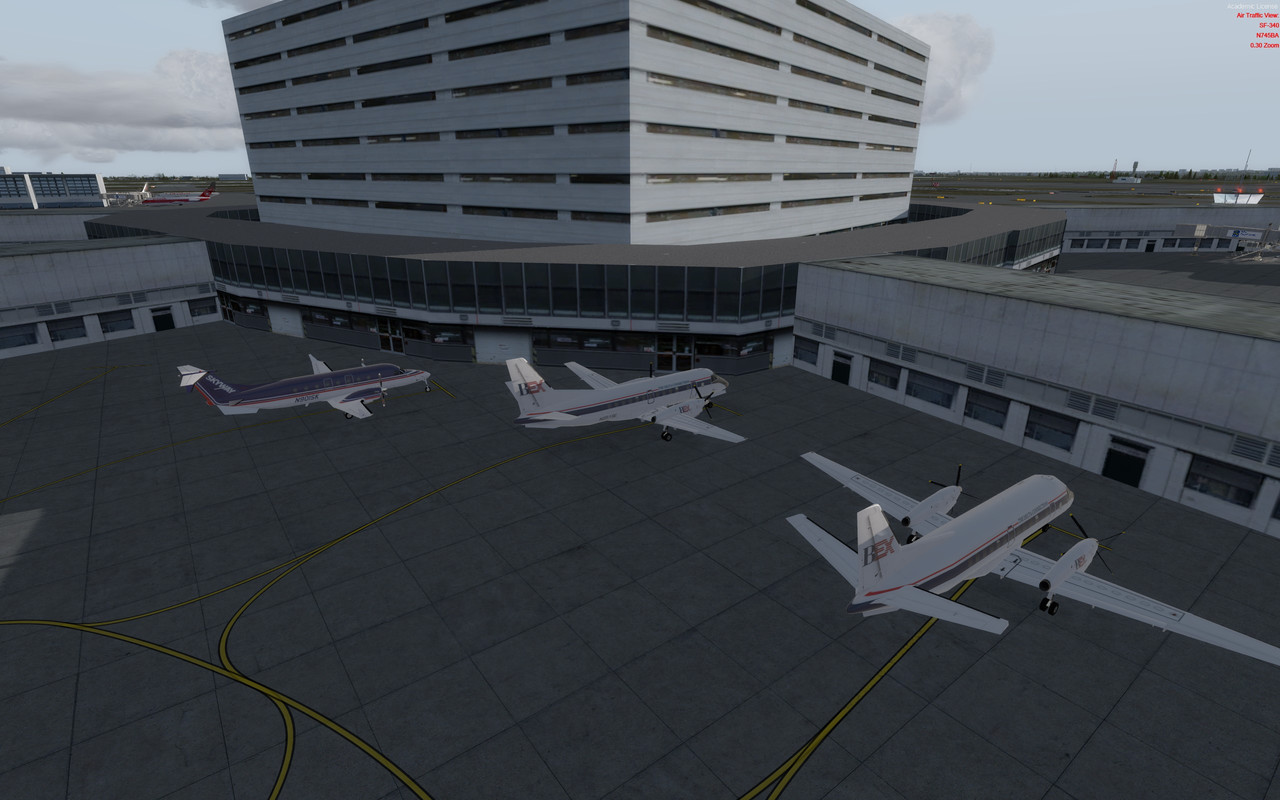 Download the CYYZ 1998 ADEX Here: drive.google.com/drive/folders/1InT2eOCqaEFYbpKeUV0KogBcfz7H2kGq?usp=sharing |
|
|
|
Post by chasensfo on Nov 29, 2021 8:04:55 GMT -5
\\Larnaca International Airport 1998 Larnaca International Airport IATA: LCA ICAO: LCLK Location: Larnaca, Cyprus Airlines Serving Larnaca in 1998: (will add later) Larnaca International Airport is the primary gateway to Cyprus, a popular leisure destination for European and Middle Eastern travelers alike, and has been since the Turkish invasion in the 1970s which rendered the former international airport in Nicosia decommissioned. Since then, the island has been split between Greek\EU control and Turkish control, with Larnaca falling under EU control. Close to the Middle East and Eastern Europe in the far South of the Mediterranean Sea, LCLK has historically seen very interesting and rare movements from these regions as well as service by many charters and major air carriers in Europe and the Middle East. While since the late 2000s the airport has had a modern terminal, in the decades prior to that, all gates were remote with passengers bused from an old large terminal out to their stands. In 1998, LCLK was in it's final form prior to the construction of the new apron and terminal which started in the 2000s. Other than a few gates, mostly those located near the Cyprus Airways hangar, pushback tugs were not required and aircraft pulled into gates facing either direction depending on which runway they landed on usually. The first row of spots could accommodate 747s and other large aircraft, but most gates were rated for either smaller widebodies like the 767 and A310 or 737 and A320 sized jets. The airport was the headquarters at the time for both Cyprus Airways and Eurocypria Airways, with both carriers operating most routes on a weekly basis and being very sporadic in their appearances in their home base in the daylight hours. Likewise, many charter carriers serving the airport also had weekly or similar service to LCLK, so most days offer plenty of unique variety. At the time, only nearby Phapos (PFO) had international air traffic in Cyprus, and many carriers serving both airports linked them with a short flight across the island. Ercan Airport (ECN) to the North is in the Turkish side of the country, and thus only permitted to this day to provide "domestic" links to Turkey and was popular with Turkish charter carriers. General Aviation was popular in Cyprus, and most airfields outside of LCA and PFO were owned by the military. Thus, LCA was also the general aviation hub for the nation with plenty of air taxi flights and even a few odd cargo airlines and VIP operations based there. This is a re-make of the default LCLK airport, with buildings and objects added along with all ramp areas and correct parking spots. All post-1990s ramps, taxiways, and objects have been removed while other taxiways have been backdated with proper surfaces added around them. LCLK, like EGLL, uses a named "holding point" system for ground operations. All proper holding points have been added in their true locations with signage providing the name of each one. The runway area and main apron have been changed with the terminal replaced with something more true to life at the time along with plenty of other changes. A future update to the 1998 incomplete airlines files will add all missing flights to Cyprus, with both carriers based there having been already completed. A future update will add a GSX profile with proper Cyprus Airways GSE, as that carrier handled most flights here. The update will also fix the issue of aircraft pushing out instead of taxiing straight out of the spots when I get better at creating those spots without messing up the proper lines on the ground. This scenery will work well for the 90s and 80s also. PFO and ECN have donationware (they require a small donation of your choice for access) high detail sceneries that are still very close to their 1998 forms, they may be found here: simmershome.de/cyprus-airports-paphos/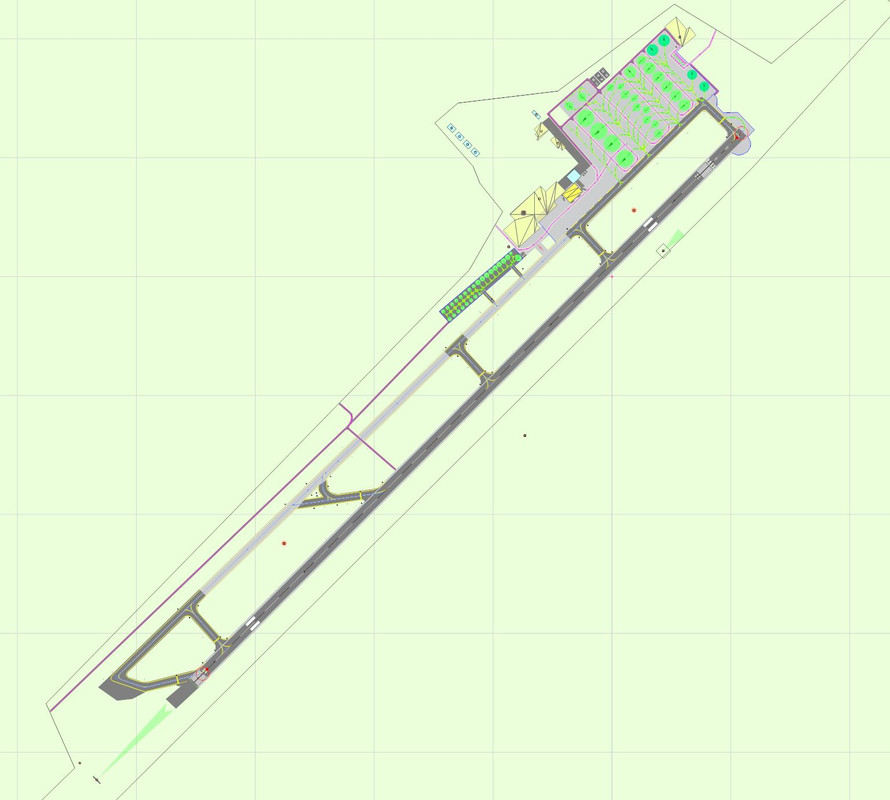  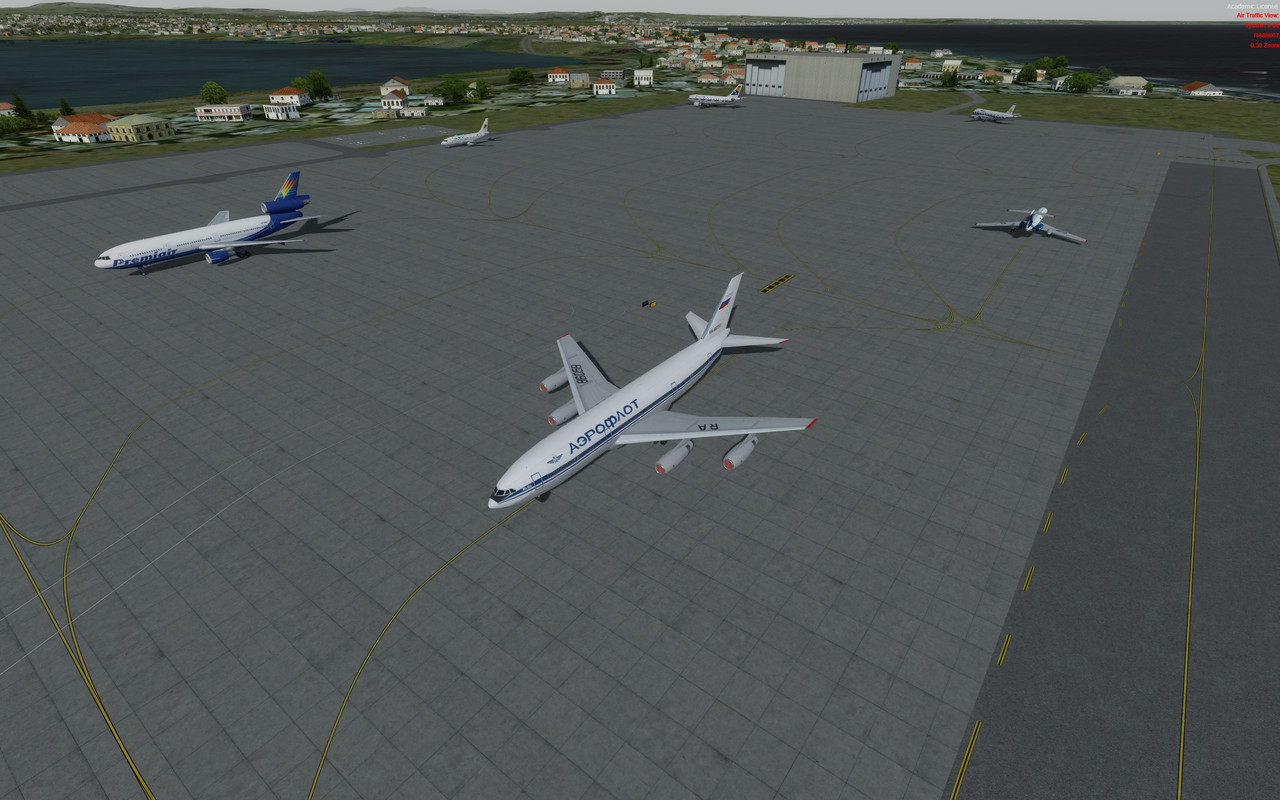 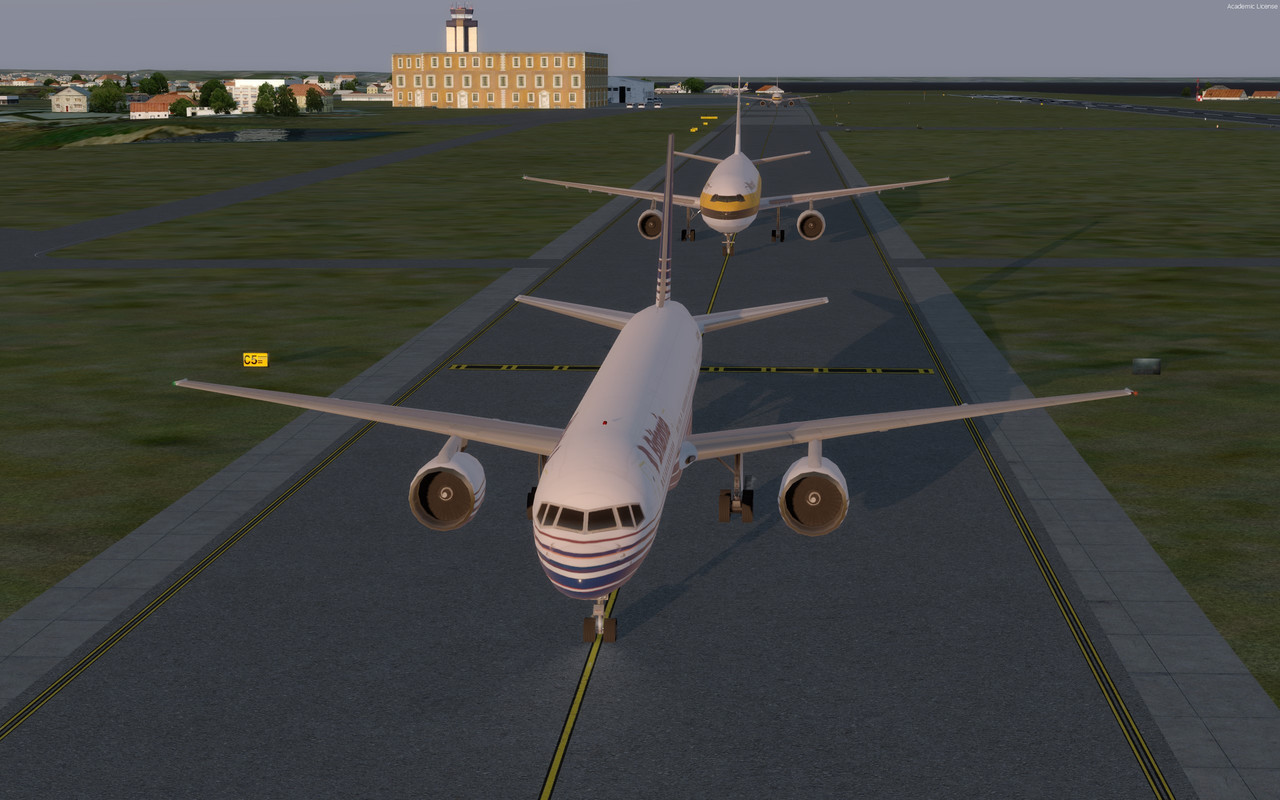 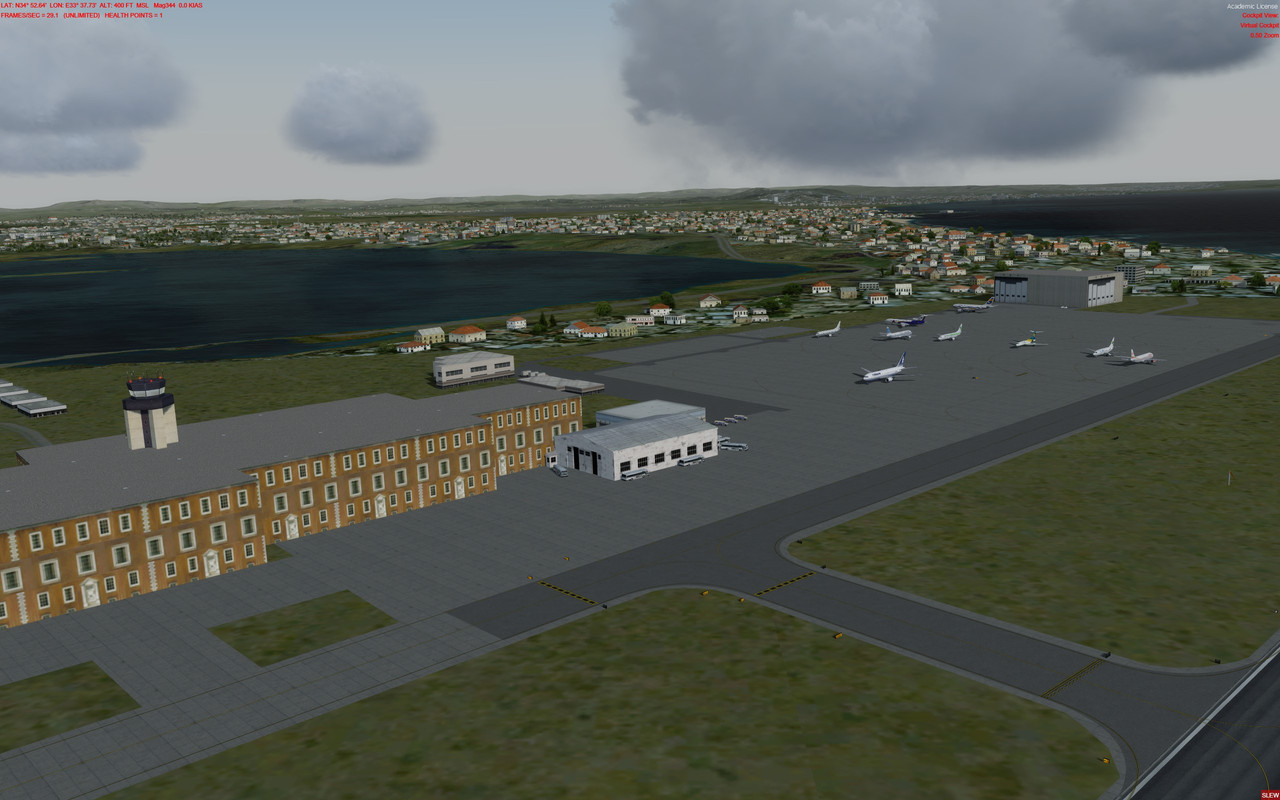  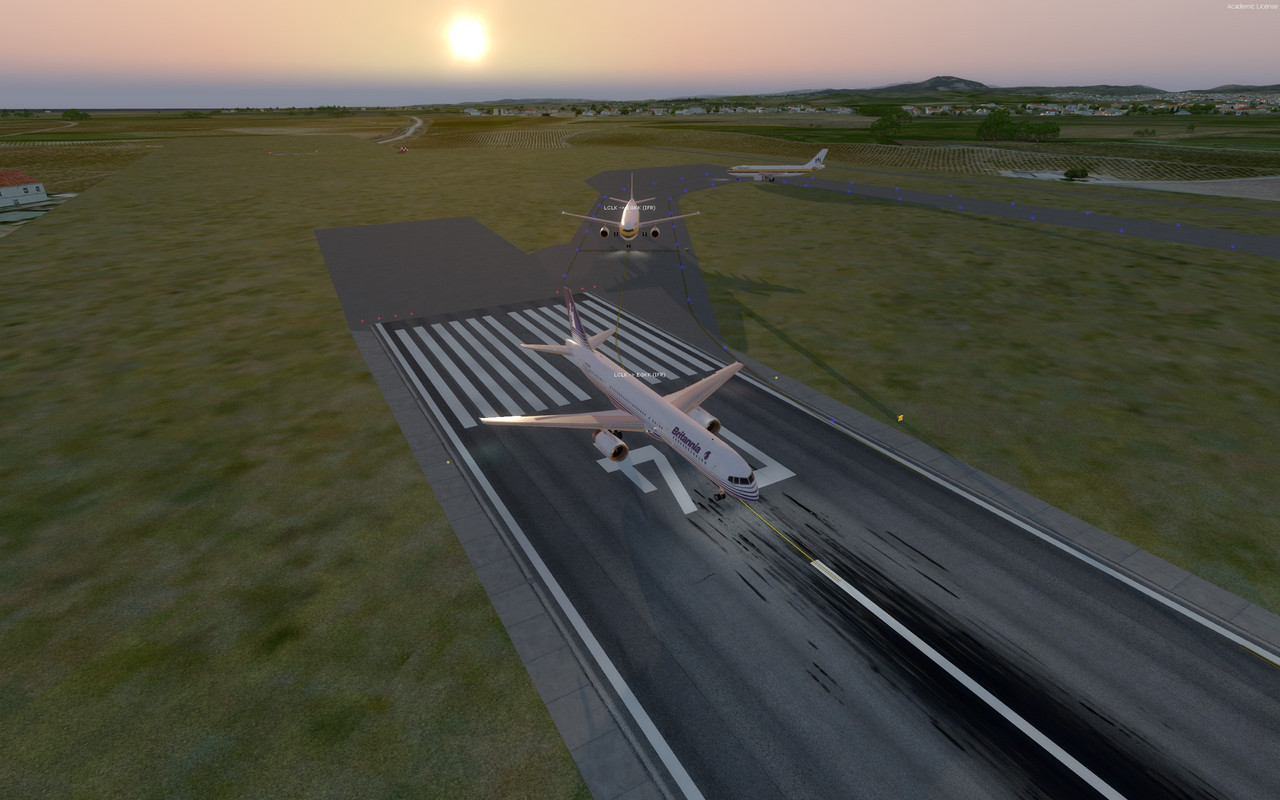 Download the Larnaca International Airport 1998 ADEX here: drive.google.com/drive/folders/1ydRSbMnWViKa2LzFbAfj2aF-Nq8cTSCE?usp=sharing |
|
|
|
Post by perficad on Dec 20, 2021 8:49:42 GMT -5
Thanks for producing these fantastic sceneries! Is there any easy way you can save these as an FSX version instead of P3D? I tried using my ADE but every time I get no taxiways and runways. In particular I would love to have the CYYZ with the Aeroquay!  |
|
|
|
Post by chasensfo on Dec 21, 2021 9:04:25 GMT -5
Thanks for producing these fantastic sceneries! Is there any easy way you can save these as an FSX version instead of P3D? I tried using my ADE but every time I get no taxiways and runways. In particular I would love to have the CYYZ with the Aeroquay!  Thank you. I only use P3Dv4 at the moment, hoping to upgrade to P3Dv5 in a few months when I get a better graphics card and MSFS when the AI is all working properly. I make the scenery for my sim as I do not have the time to figure out what I need to do to convert them to P3Dv1-3 or FSX standard. Anyone who wishes to do so for the community can go right ahead and do so and share it with everyone, but it won't be me lol. The files I provided are all you need, I don't use anything beyond those. |
|
|
|
Post by perficad on Dec 21, 2021 9:13:05 GMT -5
Thanks for producing these fantastic sceneries! Is there any easy way you can save these as an FSX version instead of P3D? I tried using my ADE but every time I get no taxiways and runways. In particular I would love to have the CYYZ with the Aeroquay!  Thank you. I only use P3Dv4 at the moment, hoping to upgrade to P3Dv5 in a few months when I get a better graphics card and MSFS when the AI is all working properly. I make the scenery for my sim as I do not have the time to figure out what I need to do to convert them to P3Dv1-3 or FSX standard. Anyone who wishes to do so for the community can go right ahead and do so and share it with everyone, but it won't be me lol. The files I provided are all you need, I don't use anything beyond those. no worries at all - I appreciate all your work! I will see if I can convert it myself. If its successful I will put on my onedrive and let you know. |
|
|
|
Post by chasensfo on Jan 11, 2022 22:32:14 GMT -5
Major updates to Detroit City Airport (DET\KDET) and Nagoya Airfield (NKM\RJNA). //Subang International Airport/Kuala Lumpur International Airport 1998 Subang International Airport/Kuala Lumpur International Airport IATA: SZB ICAO: WMSA Location: Kuala Lumpur, Malaysia Subang International Airport/Kuala Lumpur International Airport (SZB\WMSA), which today is known as Sultan Abdul Aziz Shah Airport and mostly serves ULCC and commuter carriers, was the former airport serving Kuala Lumpur until 1998. The airport was one of the busiest in Asia at the time of its closing. SZB had a single runway, 3 terminals, and areas dedicated to general aviation, cargo, military, and MAS Maintaience operations. The national carrier of Malaysia, MAS, was based in SZB along with the majority of other, and much smaller, aviation companies such as AirAsia, Pelangi Air, and Berjaya Air. Terminal 1 was a large linear international terminal that housed most international flights, for which the airport was the 2nd largest port in the region behind only Singapore (SIN) at the time. Terminal 2 was dedicated to high-frequency "shuttle" flights operated by MAS and Singapore Airlines on the quick flight to SIN which took less than an hour but was flown by many daily widebody jets. It was still very common for international carriers to connect SIN and SZB and combine the traffic in the final days of the airport, and many carriers such as Qantas, Korean Air, JAL, Saudia, Air India, and others flew several flights between these airports each day. Those flights, however, used T1 as they were considered "stopover traffic" and not "originating" traffic between the 2 points. T2 consisted of just a few gates with jetbridges along with a sizable remote parking area and cargo apron between itself and T1. T3 was used mostly for domestic flights as well as to select destinations in Indonesia and other neighboring nations. MAS dominated the domestic market and this terminal, but almost every airline in Malaysia had a presence on these gates. T3 had no jetways, with all gates requiring ground boarding. The MAS hangar, which includes an engine run-up pad and parking for almost one dozen aircraft, sat between T2 and T3 adjacent to a large general aviation area and secondary cargo area. Across the field on the West-side of the runway was a large military apron where many Malaysian Air Force C-130s were based alongside government aircraft like a Fokker 28 and frequent visits from foreign allied transports and tankers. The new airport (KUL\WMKK) opened on 27JUN98, with most commercial flights moving right away. Various Hajj flights to JED would operate during the Hajj season due to the majority Muslim population in Kuala Lumpur past the opening of KUL, but these too would move eventually. AirAsia grew at SZB until 2002 when it moved all flights to KUL. There had been 2 major fires since 1997 and the terminals were in bad shape at the time of the closure. Some commuter and regional carriers stuck around on T3, while T1 and T2 were torn down rather quickly and the airport re-purposed. MAS elected to keep its maintenance center in SZB open and still ferries aircraft in and out from time to time while the military also has maintained a presence. Some ULCCs that have popped up in the last 2 decades have also elected to serve the airport with lower costs and a more convenient location to many than KUL, and cargo carrier Raya Airways is based there, but the traffic is a fraction of what it was in the 1990s. Prepar3D actually had kept the 1998 buildings, oddly enough, intact for the most part. However, the rest of the airport and the parking situation was nothing like the late 1990s. While not quite from scratch, this airport has been re-done entirely to reflect its final days as a major international port. All parking is real based on various sources as are all surfaces and taxiways. I had some difficulty getting MAS planes to show up on T1 gates without forcing other airlines to unrealistic spots, so during peak times, you'll see T1 mostly filled with other airlines while MAS widebodies like to appear by the hangar and on the remote parking pads. MAIW has created great military packages which cover WMSA, including the C-130 packages for Malaysia, Indonesia, Japan, South Korea, the USA, Thailand, the Philippines, and Australia. I recommend you install these packages, de-compile, and change "WMKK" to "WMSA" where needed and re-compile so as to see this traffic. The 1998 project has completed all flights to SZB, including some VIP and government flights. This scenery represents the airport from the 1990s onwards, as the 3 terminal set up was accomplished in the early 1990s best I can gather. In the future, I will release a 1980s version. For GSX users, a GSX profile is included which will make the jetways look as they did in real life while assigning MAS as the standard ground handler, as they did handle most airlines in 1998 WMSA. Airlines serving Kuala Lumpur in 1998: -Aeroflot -Air France Cargo -Air India -Air Koryo -Air Lanka -Air Mauritius -AirAsia -ANA -Berjaya Air -Biman Bangladesh -British Airways -Cargolux -Cathay Pacific -China Airlines -China Southern -China Yunnan Airlines -Emirates -EVA Air -EVA Air Cargo -FedEx -Indian Airlines -Iran Air -Garuda Indonesia -Gulf Air -JAL -JAL Cargo -KLM -KLM Cargo -Korean Air -Korean Air Cargo -Lauda Air -Lufthansa -Martinair Cargo -MAS -Merpati -Myanmar Airways International -NCA -Pelangi Air -PIA -Philippine Airlines (suspended summer 98 for pilot strike) -QANTAS -Royal Air Cambodge -Royal Brunei Airlines -Royal Jordanian -Saudi Arabian Airlines -Singapore Airlines -Thai International Airways -UPS -Uzbekistan Airways -Vietnam Airlines -Yemenia 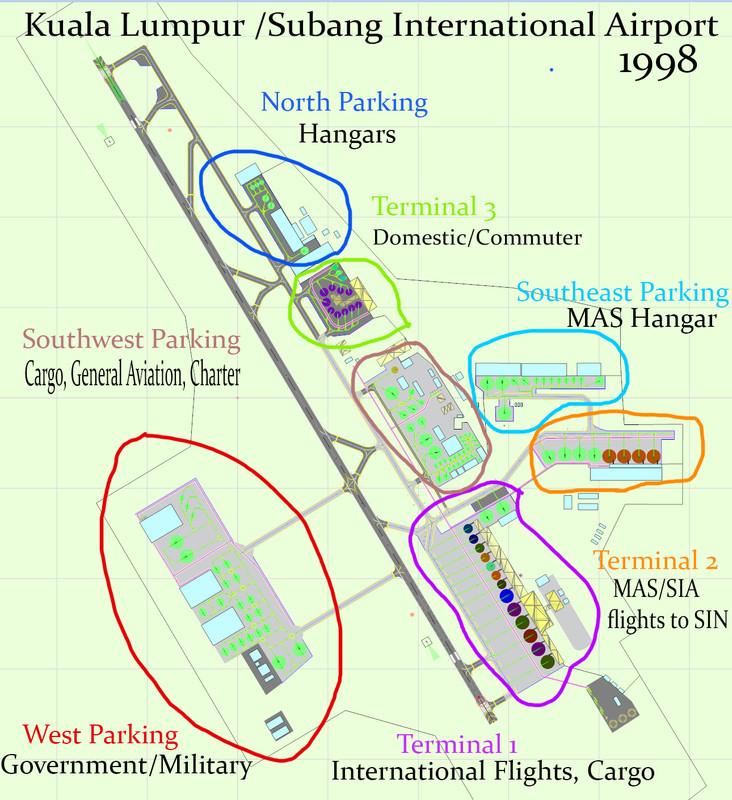 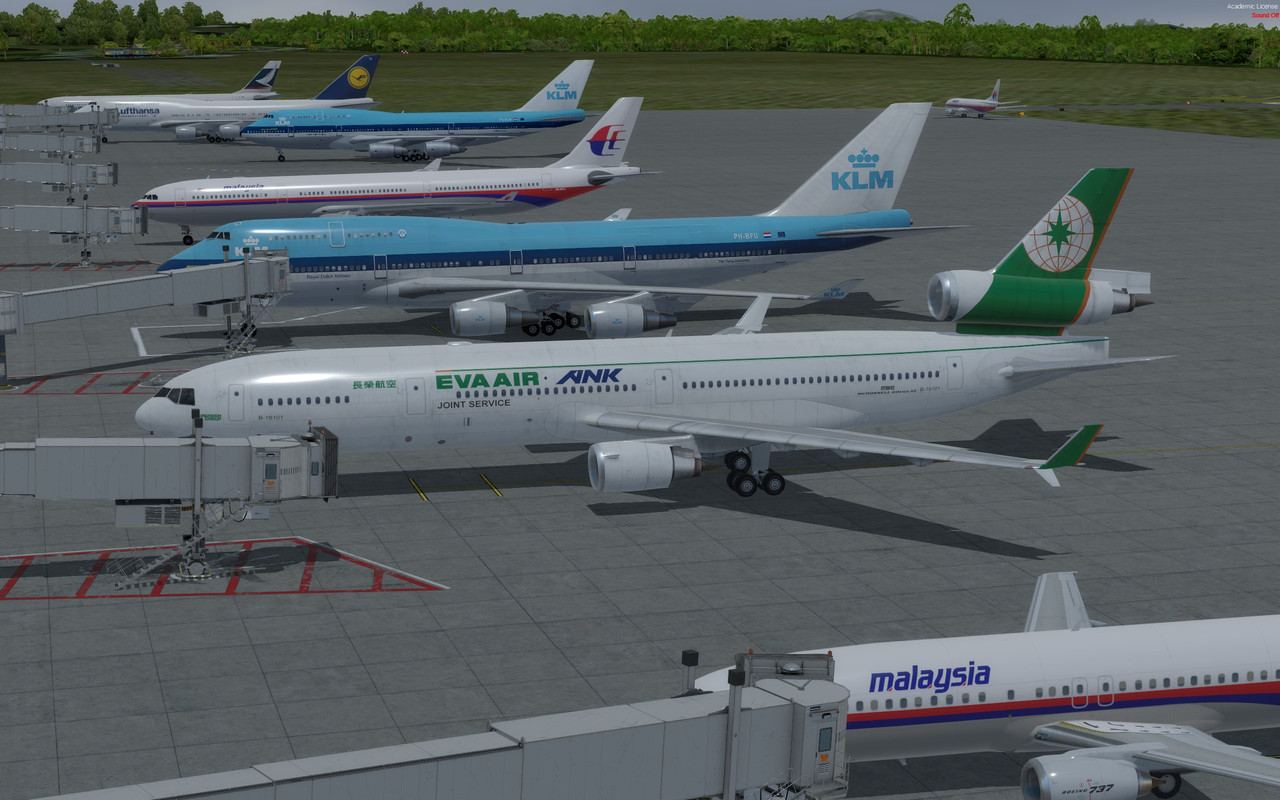 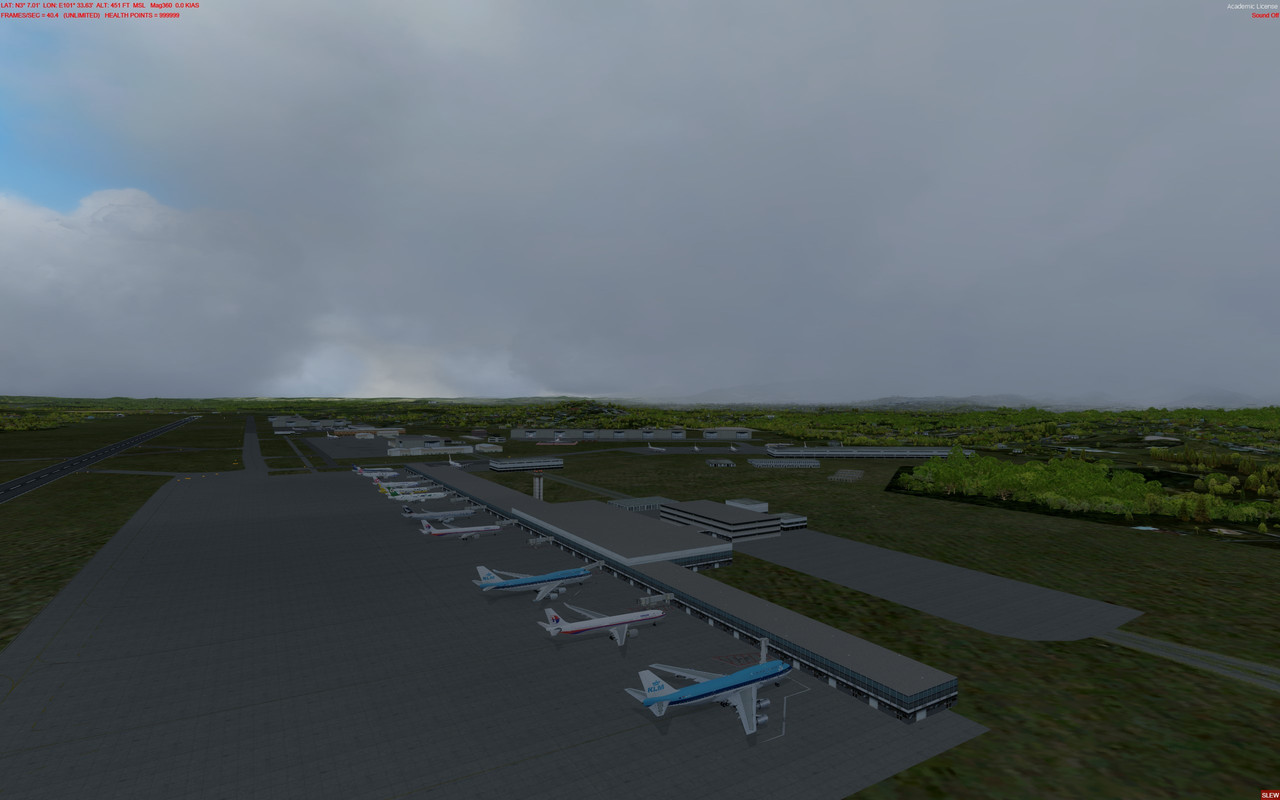 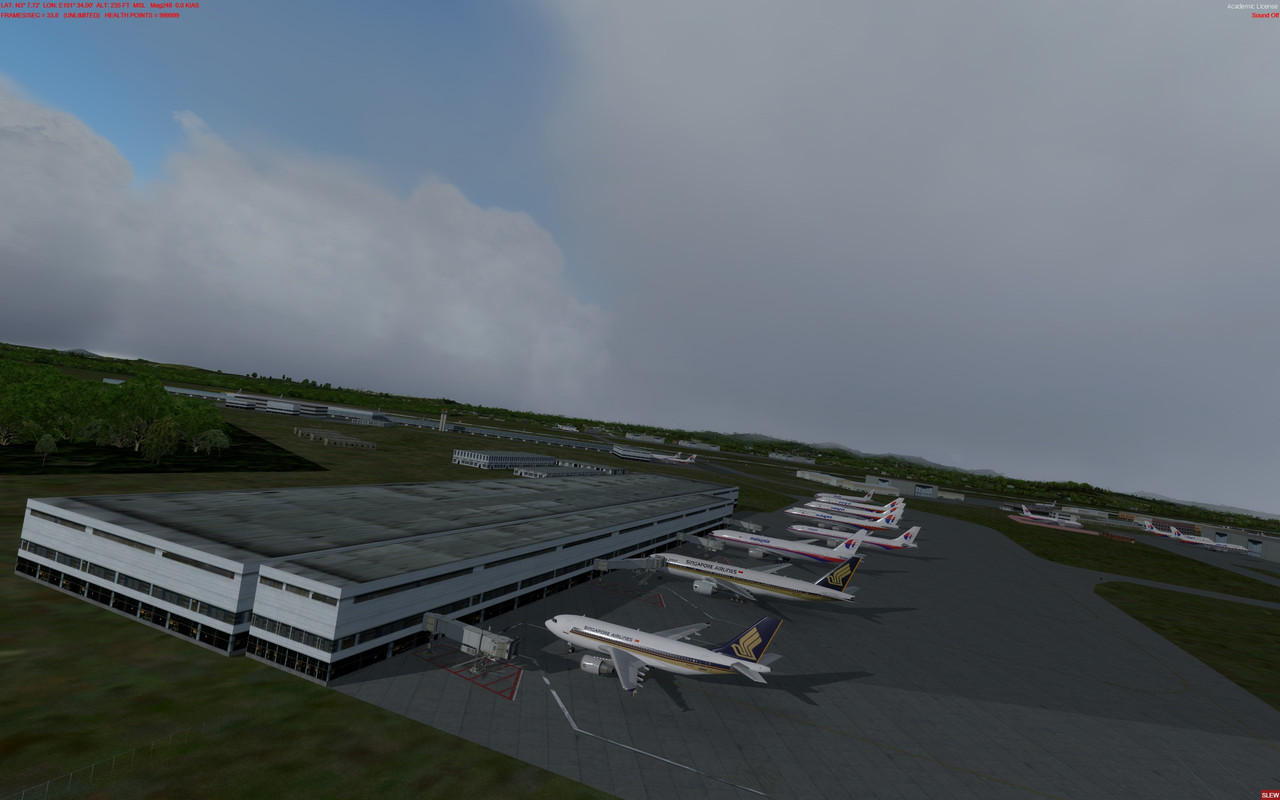    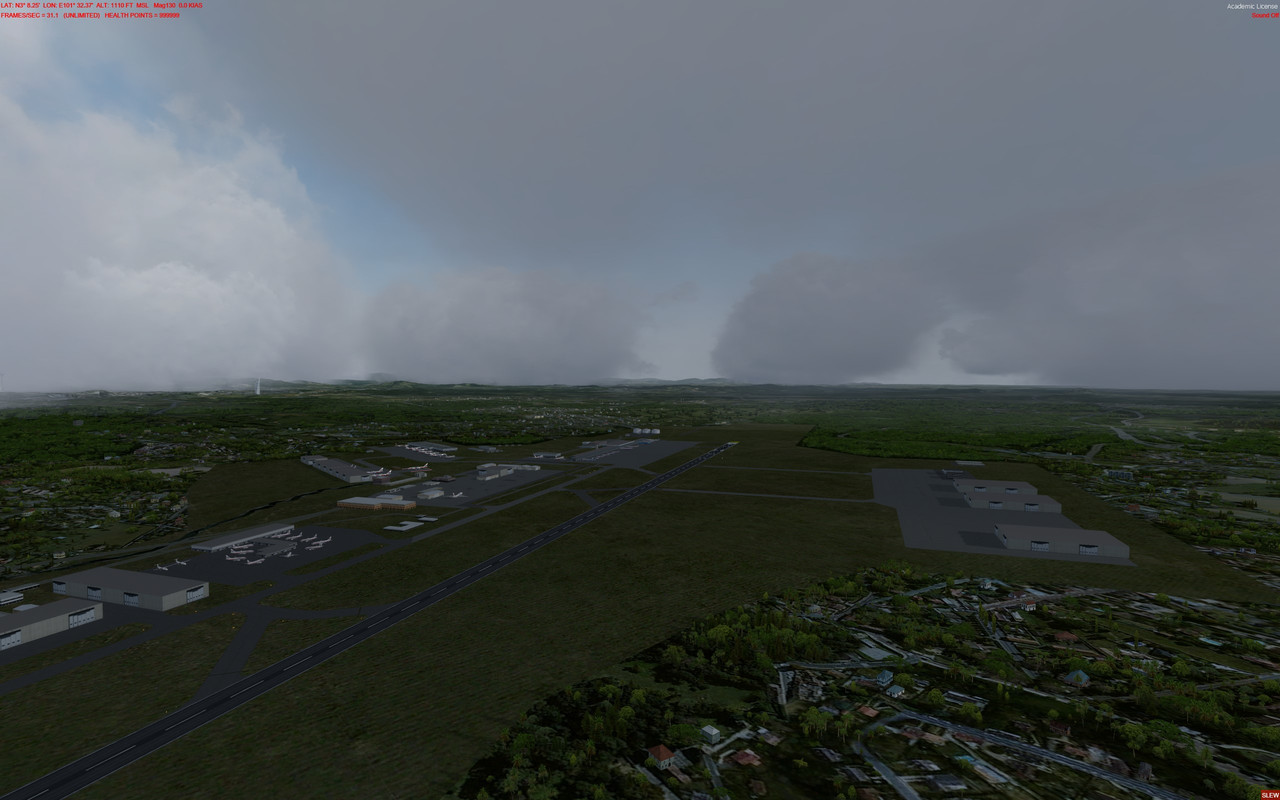  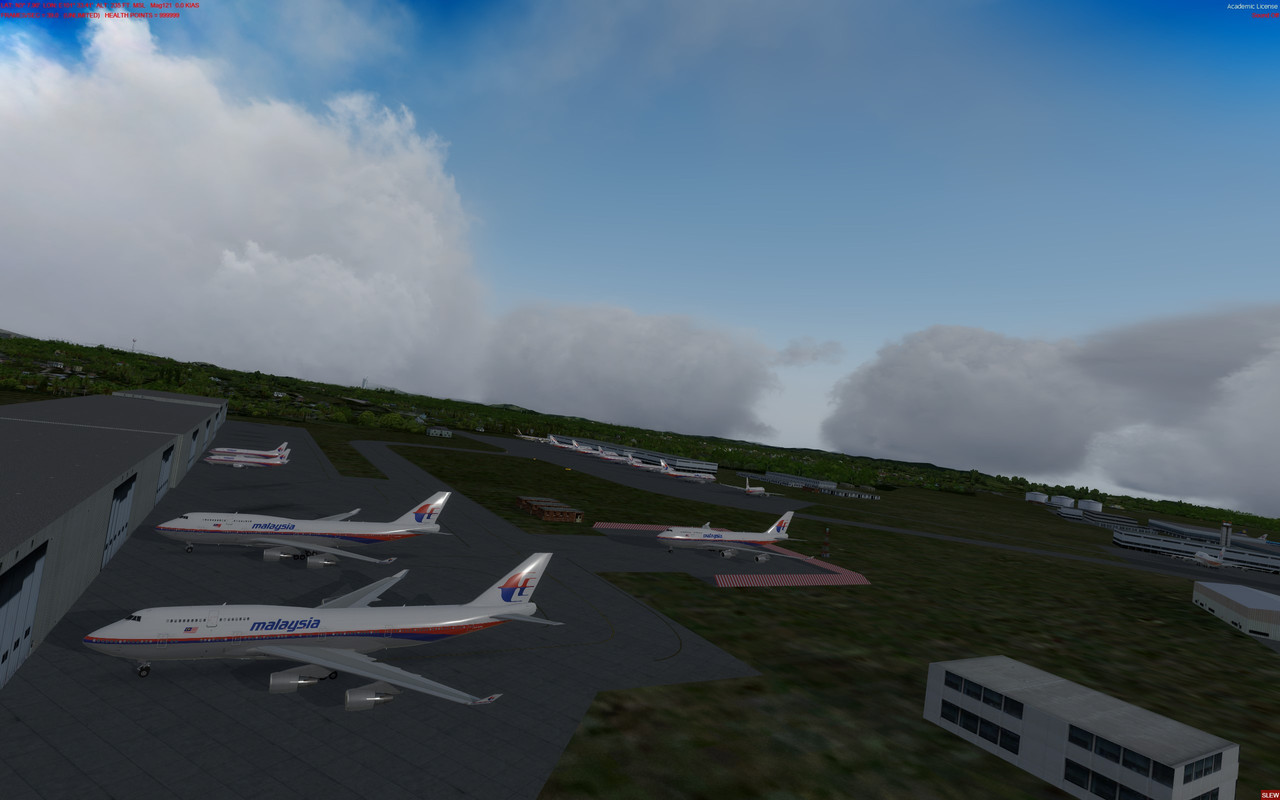 Download the 1998 Subang International Airport/Kuala Lumpur International Airport Scenery here: drive.google.com/drive/u/1/folders/16Gus-2G_vLiz1SWl5w6KV_vE_i3bzoyO |
|
|
|
Post by chasensfo on Jan 14, 2022 4:31:08 GMT -5
\\Brunei International Airport 1998 Brunei International Airport IATA: BWN ICAO: WBSB LOCATION: Bandar Seri Begawan, Brunei REQUIRES: library.avsim.net/search.php?SearchTerm=wbsb2012.zip&CatID=root&Go=Search (FREEWARE) Brunei International Airport is the national airport of the small nation of Brunei, near Malaysia, and is the headquarters for Royal Brunei Airlines. The airport also has hosted the Sultan's private VIP airliner fleet since it started in the 1970s. Brunei Airport, which preceded Brunei International Airport, was originally built as a wartime airfield by the Japanese during WWII. After the way, commercial service was slow to come to the airport, with the first routes beginning in 1953 with BWN being used as a stop on several routes in the region, with most flights operated by Borneo Airways and Malaysian Airways, the predecessors to both MAS and Singapore Airlines. At that time, the old wartime barracks served as passenger facilities, and this remained the case until the 1970s when more accessible air travel had made BWN a more popular destination. A new airport was planned in the easily accessible Brunei-Muara District, and in 1974 Brunei International Airport replaced the aging Brunei Airport. Early on, the Sultan and Royal Family of Brunei had a keen interest in aviation and maintained a VIP fleet of 727-100s. Along with this fleet, Brunei also launched a national airline with the opening of the new airport, Royal Brunei Airlines, formally establishing the carrier on the airport's opening day. Flights began in 1975 with Boeing 737s, with all destinations international due to the small size of Brunei, and service by the early 1980s stretched all the way from Manila (MNL) to Darwin (DRW). Through the 1980s and into the 1990s, both the Sutlan's VIP fleet and Royal Brunei went through expansion adding types such as the 757-200, 767-200/300, and A340-200. From the mid to late 1990s, Royal Brunei went on a massive expansion campaign, creating a regional subsidiary named Borneo Airways (having borrowed the name from the first airline to serve Brunei) and having added a pair of Fokker 100s to the fleet for more frequent Asian flights along with 767 expansion across Europe and the Middle East. The Sultan expanded the fleet to include several A340s, an A310, and a 747SP while service from local carriers like Philippine Airlines, MAS, Singapore Airlines, and Bouraq Airlines increased. The military presence on the airfield also grew considerably, with a large attack helicopter force based at the airfield and frequent visits from allied transports. Though the airport was often sleepy, the terminal gates were now filling up at peak times requiring the use of hardstands. Military and VIP traffic was generally on the North Side of the field, though helipads and other military facilities were also located on the Northeast corner of the field where Royal Brunei had its maintenance base. The passenger terminal housed all scheduled flights, as well as occasional charters, and there were 4 remote gates set up for the Borneo Airways Do228s. Several hardstands to the South of the terminal were used for overflow parking and the occasional cargo flight. In 1999, the Sultan celebrated his 53rd birthday with a very large party that drew in VIP visitors from around the globe. Between Wednesday afternoon and Saturday evening each week, this is represented with many of the real-life visitors for this event flying in. Some arrived in military transports like the P-3, C-130, or C-32, others arrived in chartered airlines such as the leaders of the Philippines, Thailand, Saudi Arabia, Vietnam, Indonesia and Singapore arriving on their national carriers, a few chartered aircraft such as a Corsair 747 or a private 727-200 for the voyage, and the rest like Malaysia used their dedicated VIP transports for the affair. This event will fill up much of the parking in BWN. In addition to these flights, the VIP 767 and one of the A340-200s do touch and go at the airport a few times per week like they often did in real life for pilot currency while the rest of the Sultan's VIP fleet is in and out during the week. Today, the airport is facing more major expansion as the facilities were getting stretched thin by new demand at the start of the pandemic, and future updates will allow access to airliners as big as the A380. This is a total remake of the FSX scenery for this airport, making it fully compatible with P3D and changing most of it. I added all the Military and Government ramps and adjusted all the parking and taxiways. I also added all the missing helipads while backdating the airport terminal. This scenery also does a good job of representing the modern airport, except for the 1st gate being split into 4 Do228 gates and the parking assignments. All scheduled flights to Brunei are complete already by the 1998 project flightplans, while I am adding the rest of the VIP flights needed for the Sultan's birthday, with many already completed with updates to the relevant carrier\operator. For GSX users, a GSX profile is included which will make the jetways look as they did in real life. The following airlines served Brunei in 1998: -Borneo Airways -Bouraq Indonesia Airlines -MAS -Philippine Airlines (suspended during summer of 1998 for pilot strike) -Royal Brunei Airlines -Singapore Airlines -Thai International Airways The following airlines\operators participated in the Sultan's 1999 Birthday Celebration: -Brunei Air Force -Brunei Sultan's Flight -Corsair -Garuda Indonesia -Jordanian Government -Malaysian Air Force -Philippine Air Force -Philippine Airlines -Royal Air Force -Royal Australian Air Force -Royal New Zealand Air Force -Royal Saudi Bank -Saudi Arabian Airlines -Singapore Air Force -Singapore Airlines -Thai Air Force -Thai International Airways -US Navy -Vietnam Airlines 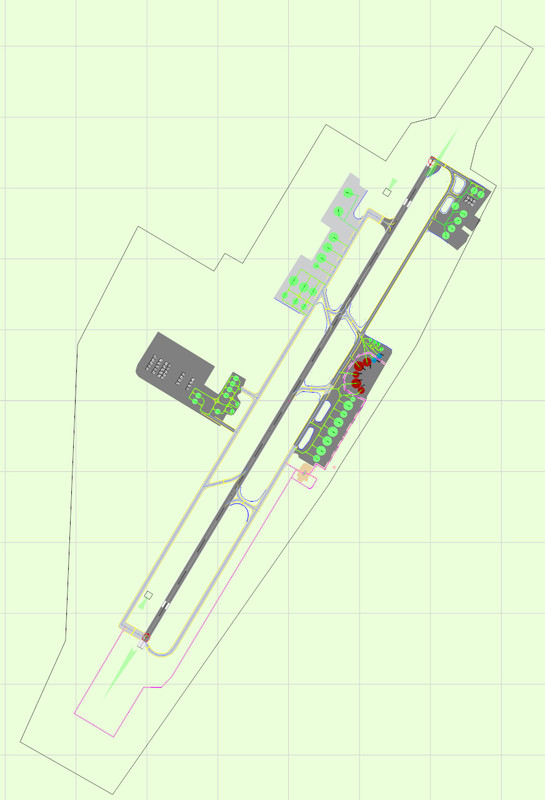  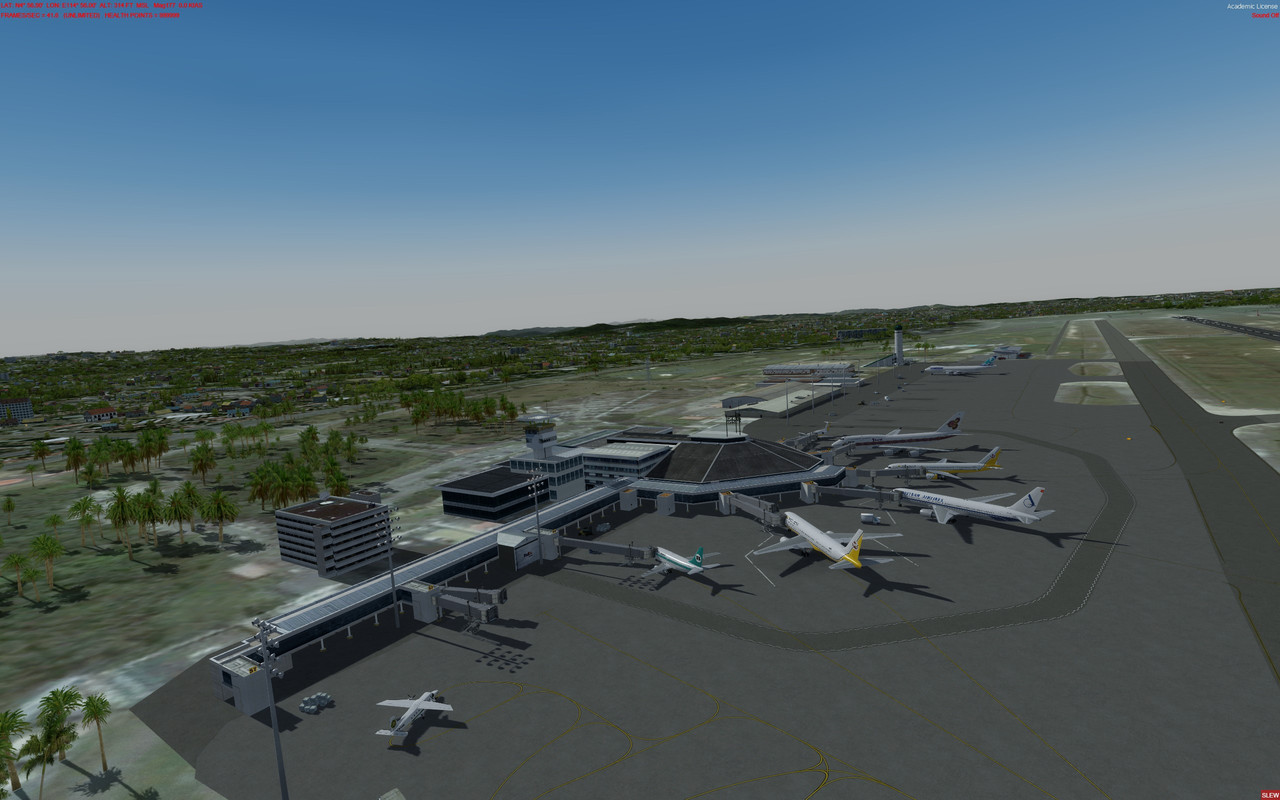 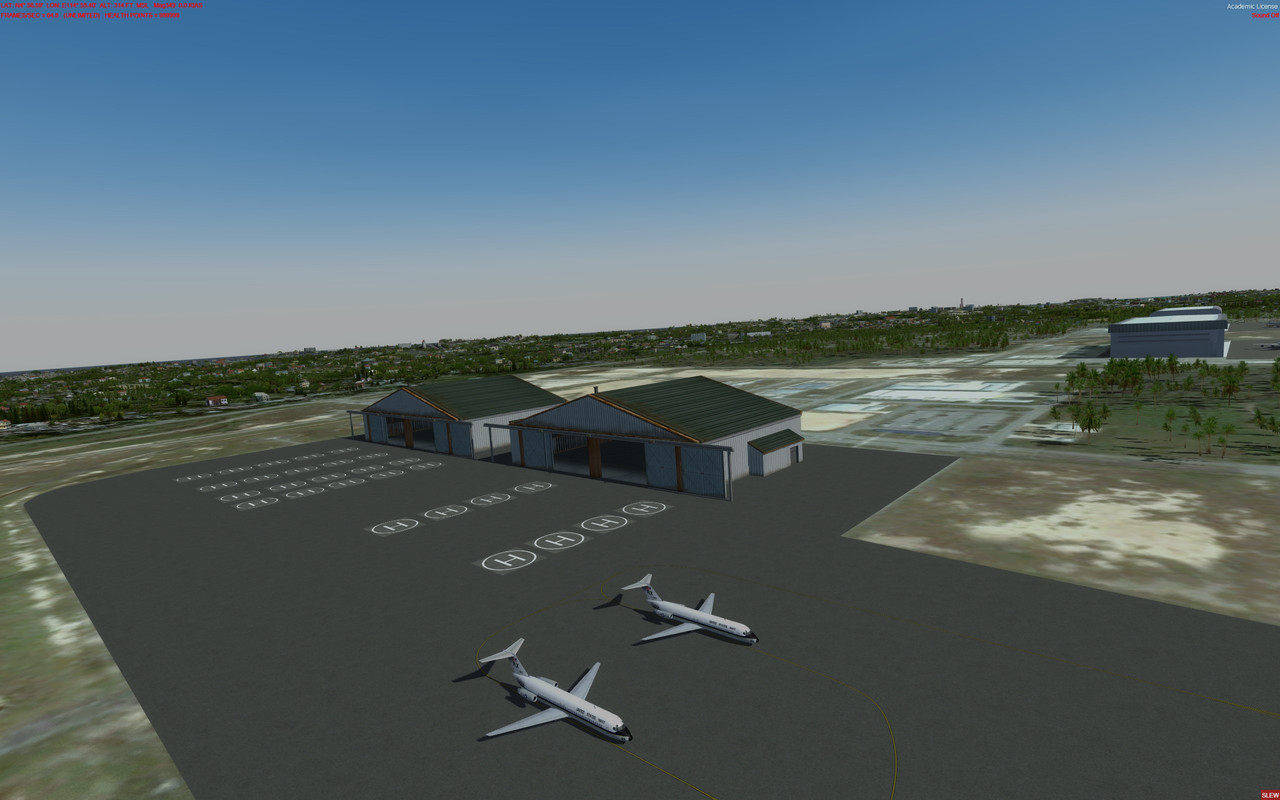  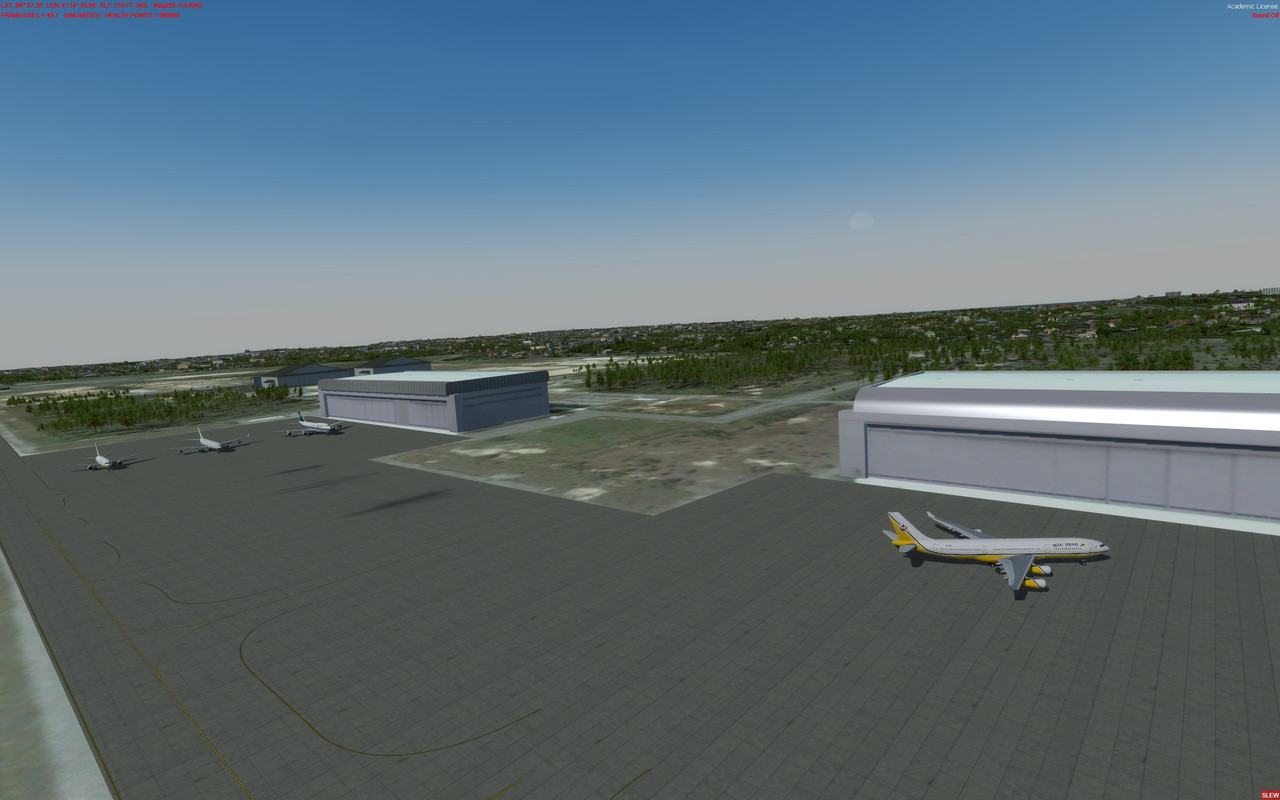 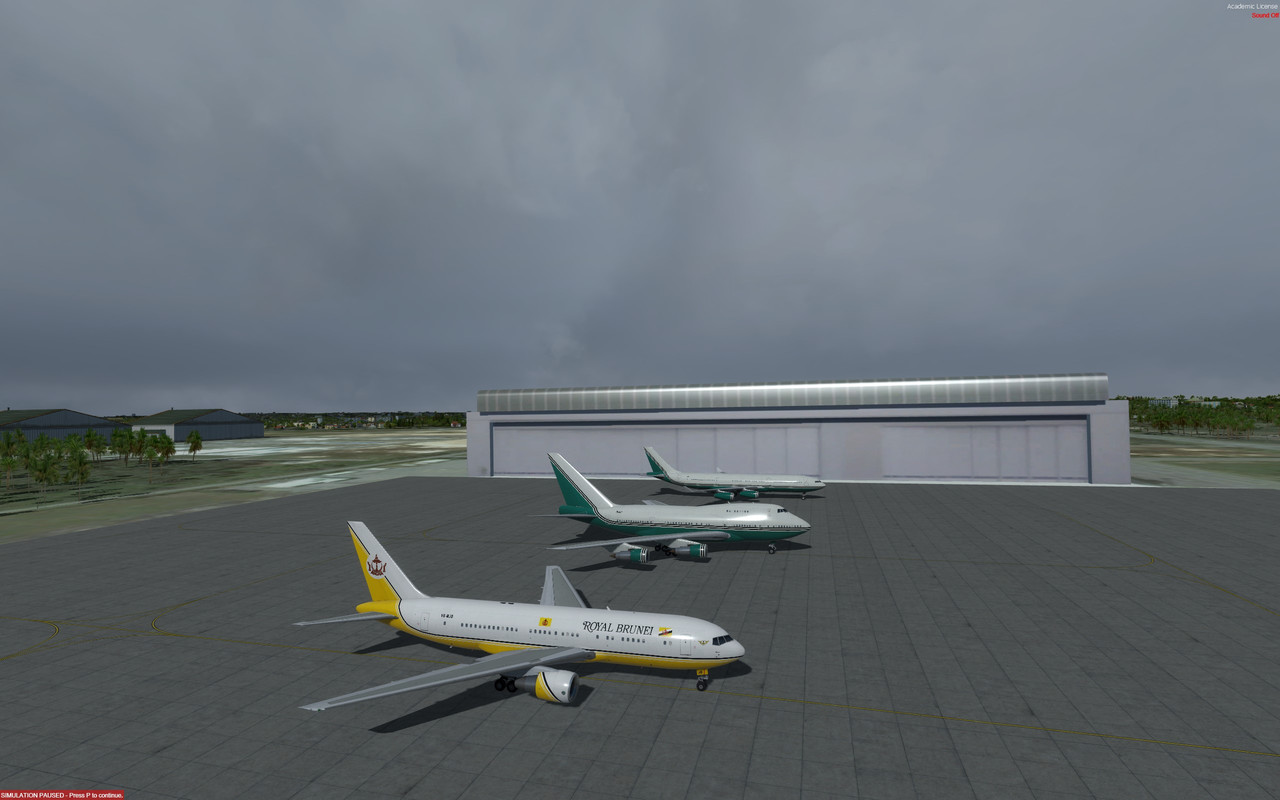 Download Brunei International Airport 1998 Scenery Here: drive.google.com/drive/u/1/folders/1hDXJ9xGzOZJhswxzP4AMDeg7yJFAylGz |
|
|
|
Post by chasensfo on Jan 14, 2022 6:29:28 GMT -5
\\Subic Bay International Airport 1998 v2 (UPDATE 02FEB22; re-did airline terminal parking, added dynamic lighting, added proper taxiway lighting, tweaked some areas for better realism) Subic Bay International Airport IATA: SFS ICAO: RPLB LOCATION: Subic Bay, Philippines Subic Bay International Airport, located West of Manila, is a formal US Naval Station that underwent a total renovation in the mid-1990s to become a functional state-of-the-art commercial airport and cargo super hub. Today, however, the airport sits mostly deserted having lost most of its commercial air service long ago, and the rotting retired airliners from failed start-up carriers and unused open space serve as a reminder of the airport's short-lived glory days. Having founded SFS as a Naval Air Station, the US Navy held onto the airfield until the early 1990s. During this time, commercial operations required permission and were infrequent. Once the US handed the airport over to the Filipino Authorities in 1992, just 20 days later the first international flight, a FAT MD-80 operating an SFS-MZG-TPE route, was started. The airport became popular with US and other foreign state visitors due to the congestion and smog of Manila (MNL), and Philippine Airlines had its first 747-400 delivery flight from Seattle (PAE) arrive at SFS with the President of The Philippines on board. SFS handled 100,000 passengers by 1995 in the first 3 years it operated and went into a major expansion that year. In 1995, a new passenger terminal was complete with parking spots for up to 7 aircraft with 2 gates featuring jetways and parking for aircraft as large as the 747-400. Despite this, the airport rarely had more than 1 or 2 passenger flights on the ground at any one time, and some of the smaller gates would block in large aircraft on the main 2 gates if all had to be used at once. The control tower was renovated with state-of-the-art radar and communications systems, and much of the old US Navy ramp was converted into FedEx's "AsiaOne" hub. With parking spots for 4 props, 2 VIP aircraft as large as 747-400s, and up to 18 MD-11s, the facility was to be the main hub of operations for FedEx in the Pacific. Flights were mostly operated by A310s and MD-11s with a few A300 flights mixed in, and 11 cities in Asia were initially served from SFS. These flights were supplemented by 4 FedEx Feeder Cessna 208B Caravans operated by Corporate Air, mostly flying to nearby MNL and Clark (CRK). A flight busy flight school operated at the North End of the field, known as "Midway", supported by a tiny runway 07L/25R. Despite the presence of this runway, the main runway was still designated as 07/25. The Midway ramp also housed what was left of Military operations at SFS, with spots for transport and combat aircraft transiting the base occasionally. The rest of the general aviation parking and other services were located on the "Southeast Apron" adjacent to the passenger terminal. In 1998, the only scheduled passenger service to SFS was 3 weekly flights operated by FAT to Taiwan. However, Air Philippines used its YS-11As on an "Air Bridge" service between SFS and MNL as indirect highways and dense traffic made air service desirable. The flights operated frequently during the day, especially on weekdays. GrandAir, in its last days of operation by then, was using SFS and a few other airports as a destination for frequent A300 charter flights to Hong Kong, taking advantage of Philippine Airlines having suspended most of its service at the time. These charters started back in 1996, but the frequency had picked up considerably in the late 1990s. 1998 would be a year of record growth for the airport, with 100,000 passengers carried and over 1,000 international and 6,000 domestic flights operated (though mostly on a charter basis). The Sultan of Brunei even stopped by in an A340-200 for a visit that year. This was the golden year for SFS which would never again see these passenger numbers. GrandAir failed in 1999, and thus the majority of passenger charter flights disappeared. Air Philippines retired its YS-11As and better roadways between SFS and MNL opened up, eliminating the air bridge. FAT also ended their long-standing SFS routes around the same time. Soon, not much was left but FedEx. However, built on the edge of Subic Bay, which bordered one end of the airport, and with high mountains bordering the other side, the weather and winds at SFS could get rather wild and unpredictable, which is bad for the MD-11 which is very temperamental to land. FedEx lost an MD-11 in a nearly fatal disaster in 1999 landing in SFS, and the pilots expressed great concern about the safety of the airfield. With Guangzhou (CAN) opening a new major hub airport in 2004, FedEx reached a deal to move its AsiaOne hub there. In 2009, FedEx effectively transferred the last of its hub operations to CAN, closing the Subic Bay hub after 14 years. GA traffic also dwindled and runway 07L/25R was converted to a taxiway. This overall blow to air traffic was so great that the airport was almost closed in 2010, but the city decided to keep it open. Most of the Northern end of the airport was destroyed and turned into a racetrack and a shipping port with a logistics center. It was not until 2016, almost 17 years after the last commercial service, the commercial flights returned to SFS with Air Juan operating 9-seat commuter flights to MNL. Several start-ups had come and gone by then, but none had materialized into more than a few public charters. New ownership as of 2018 has the goal of converting the airport to a business aviation hub rather than attempting to attract new airline traffic as the CRK airport will also be expanding with hopes to steal airline traffic from MNL. This scenery uses all default objects except for the FedEx trucks which are included with the Runway 12 scenery library and information is based on 1998 charts. The default airport has been totally rebuilt, but if you do not use ORBX Global Vector, it appears that FSX and P3D did not properly create the coastline around the airport. Thus, the military apron and taxiways will be in the water without ORBX Global Vector, which shapes all coastlines in the sim to match real life, along with other improvements. For GSX users, a profile is provided to display realistic-looking jetways and to make FedEx and Air Philippines the default ground handlers. Thanks to Miguel Ceballos for the 1998 Charts for RPLB, which are included. This scenery represents RPLB from the opening of the FedEx facility in 1995 to the closure of that hub in 2009. It is still a mostly accurate representation of the modern airport, though of course the cargo facilities and passenger terminal sit empty, the smaller runway is closed, and several taxiways and most of the Northern military facilities are gone. Airlines Serving Subic Bay in 1998: - Air Philippines - Cathay Pacific - Far Eastern Air Transport (FAT) - FedEx - FedEx Feeder operated by Corporate Air - GrandAir Philippines - Royal Brunei Sultan Flight    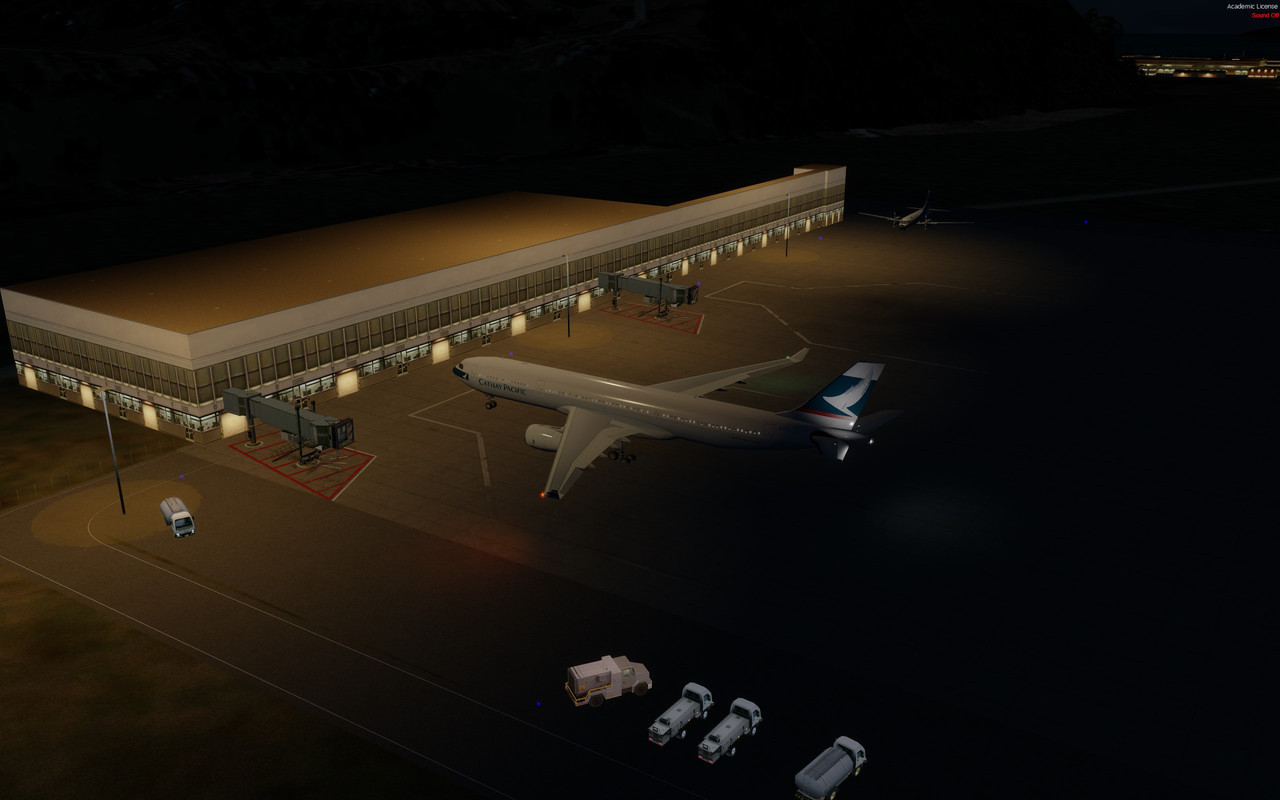 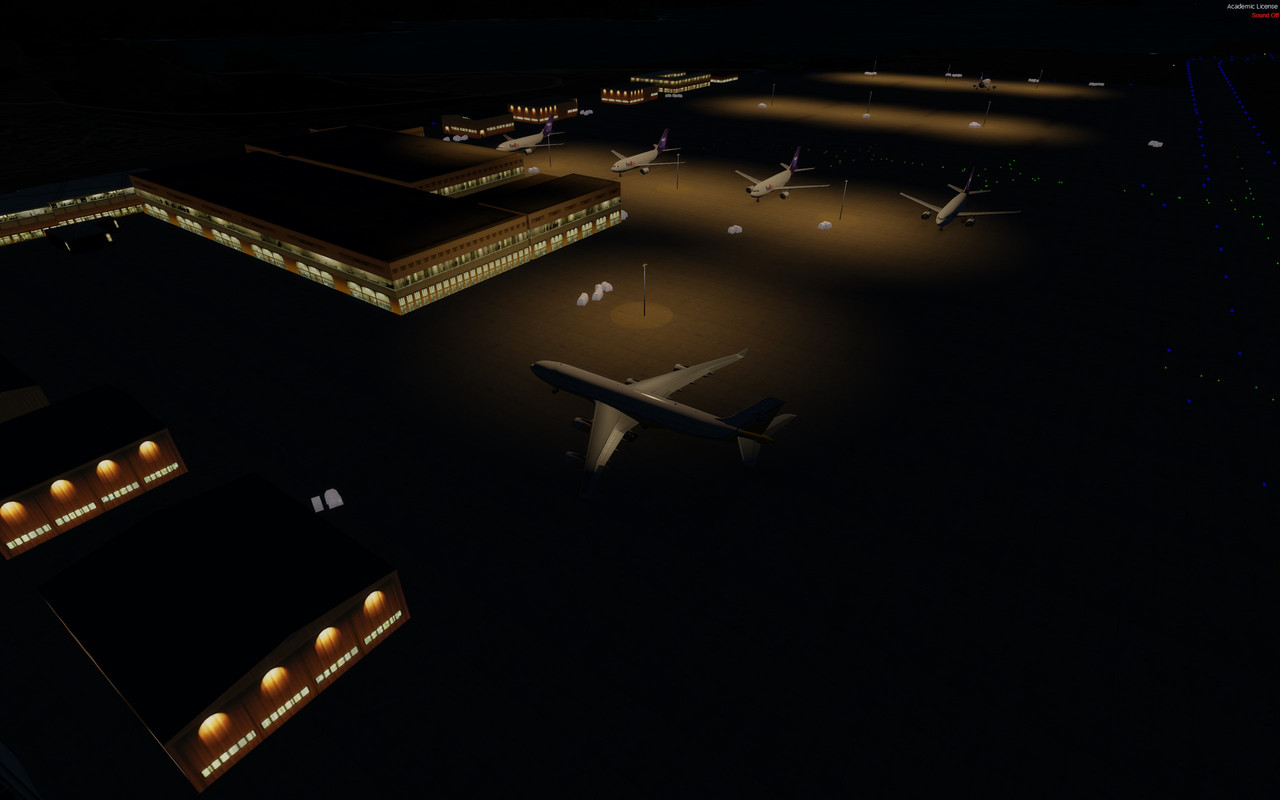 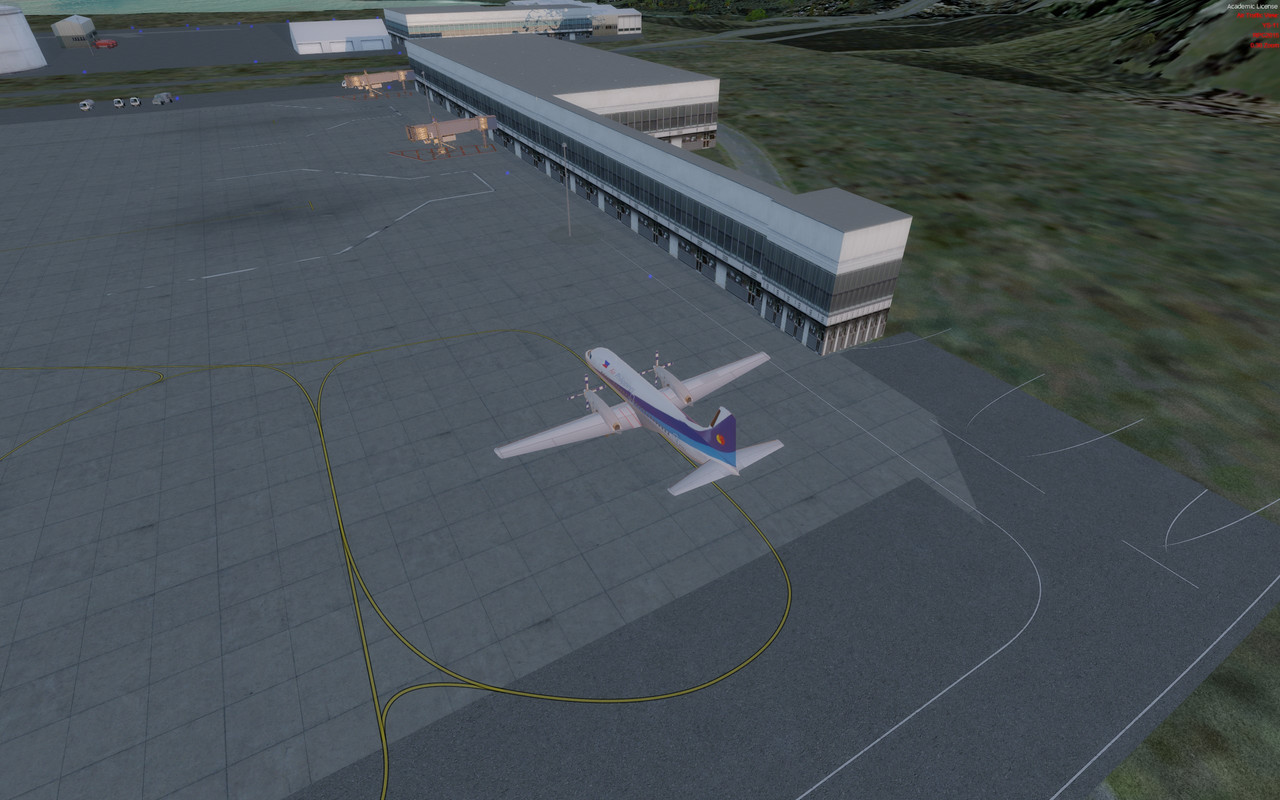 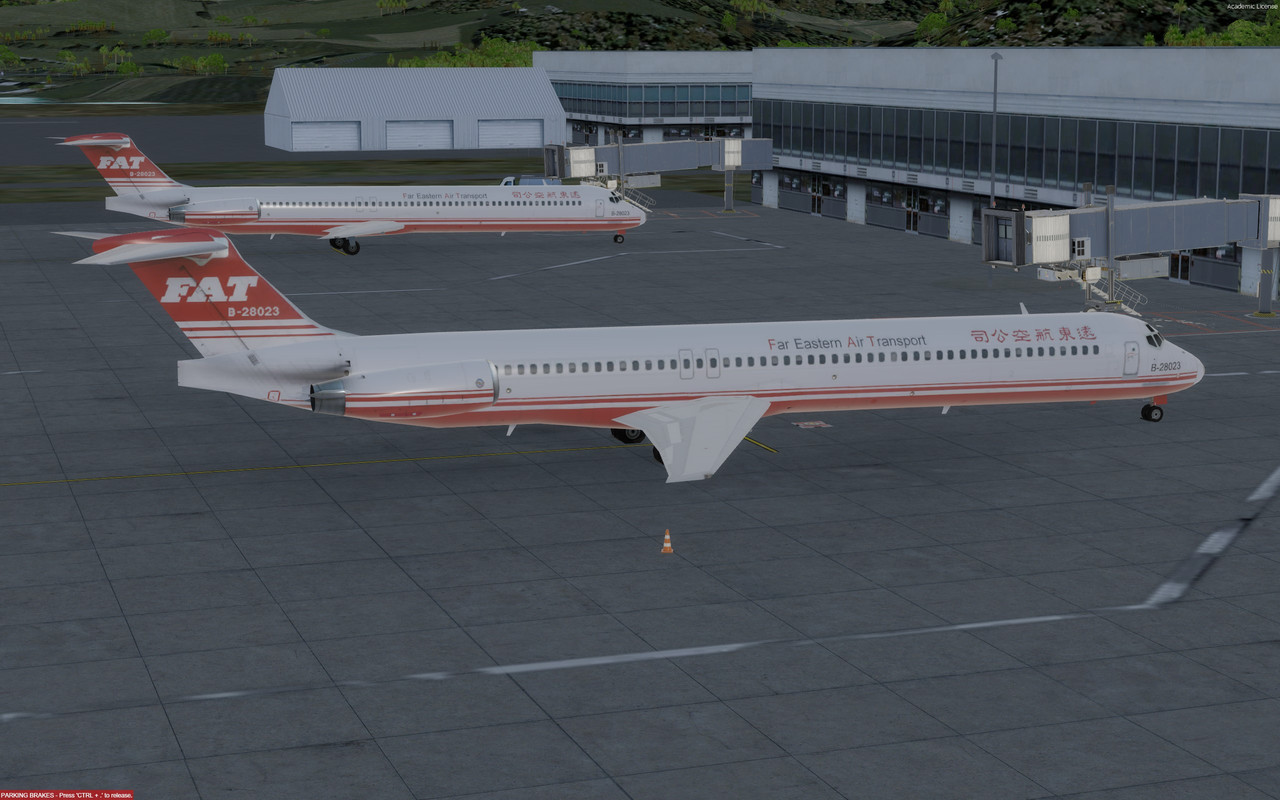 Download Subic Bay International Airport 1998 v2 Scenery Here: drive.google.com/drive/folders/1al0_h7lgWEh1t5HxiovYnKT3JcimOXur |
|
|
|
Post by chasensfo on Feb 4, 2022 19:40:19 GMT -5
Updates to version 2 adding dynamic lighting and other fixes for ZSOX, ZGOX, ZSHX. Now, here is the first scenery offering multiple eras depending on the traffic you wish to see: \\Kunming Wujiaba Airport 1985\1990\1995\1999\2001\2003 Kunming Wujiaba Airport IATA: KMG ICAO: ZPPP (ZPPX in the simulator) Location: Kunming, China Kunming Wujiaba Airport (KMG) was a rather large Chinese airport serving the city of Kunming until its closure on 28JUN12, located in the Guandu District. The airport was quickly demolished after its closure, and today is a densely populated urban area. Located at a high elevation with rising terrain, it was a challenging airport to operate at, especially in the hot summer. Constructed in 1922 under the direction of local WWI warlord General Tang Jiyao, Kunming Wujiaba Airport was one of the oldest airports in China and 100 years old at the time of its closing. The airfield underwent expansion during the Japanese invasion of China in WWII and became the main military airfield in the Yunnan province as well as the new home of the Chinese Central Air Force Academy. During this time, the famed "Flying Tigers", a group of volunteer only US Army Air Force pilots who helped China fight the Japanese prior to official US involvement in the war in their infamous P-40 Warhawks with "Tiger Teeth" face on the nose, were based at Wujiaba Airport. Later, after the 1941 attack on Pearl Harbor and the official entry of the US into WWII, Wujiaba Airport became a major transport and logistics hub for the allied forces, with various squadrons based there flying all across China and Southeast Asia, including the famed "Over the Hump" flights beyond the Himmalyanian mountain range to Chabua Airfield in India. This role saw that the airport expanded for larger transport aircraft and the movement of large amounts of people and goods. After WWII, the facilities and route structures were in place for Wujiaba Airport to quickly become a large and important Chinese civilian airport. The rural surroundings allowed constant expansion until the airport was one of the larger airfields in China by the 1970s, with the national carrier CAAC operating a Yunnan regional division based out of the airfield. By the early 1990s, the airport had expanded to offer a large runway and other facilities for widebody jets, with an apron that could handle about a dozen or so airliners plus cargo and other traffic. The Chinese military kept a presence at the joint-use airfield, and a decent number of J-7 Skybolt fighters were based there. As CAAC began to break up into smaller and privatized air carriers, the KMG-based division became China Yunnan Airlines in 1992. Initially operating Boeing 737-300s, the carrier quickly expanded both domestically and internationally, taking advantage of KMG's Southernly geographical position allowing easy access to points in Southeast Asia. Soon after, a new terminal opened adjacent to the original airline apron with 4 jetbridge-capable gates which were suitable for 737 and MD-80 sized aircraft while additional remote parking for larger planes like the 757 and A300 was also added. With the massive expansion of China Yunnan Airlines, work began almost immediately by the mid-1990s on a new and modern large terminal. China Yunnan Airlines had added 767-300s by this time, and along with widebody aircraft from other Chinese carriers as well as Thai International Airways, modern widebody facilities were needed. Gates began opening 1 section at a time on the new terminal in 1998, with the new terminal removing the 4th gate of the early 90s terminal as well as the newer remote parking. By 1999, this terminal was fully opened, adding 2 widebody capable international arrivals gates (1 747 capable and the other up to a 767-300) and about 1 dozen other new gates. Expansion on the West-end of the airfield was carried out next with the remote parking apron expanded, capable of handling any sized aircraft, along with VIP and cargo movements as well as a maintenance apron for Chinna Yunnan Airlines and their new large hangar, which was completed in 2003. Wujiaba Airport was now the main hub of Southern China, and one of the busiest airports in the country along with being one of the few to offer decent international service, and China Yunnan Airlines had grown into one of the larger Chinese carriers and aircraft as large as the A340-300 were regularly scheduled. The airport was also very popular with planespotters, as the close proximity to large buildings and vantage points allowed locals to enjoy sitting under the approach lights or getting elevated shots of aircraft near the runways. Expansion continued into the mid-2000s with additional terminals and jetways expanding Westward into the former main airline apron. The apron between the main terminal and military areas was also expanded, and there was much more pavement by final expansion later in the 2000s than what was built by the end of the 1990s. Urban sprawl, however, would thwart any further runway or terminal expansion, with high-rise apartments and businesses now lining the airport perimeter. It was obvious that KMG needed a much larger facility for future expansion as soon as possible, especially after major consolidation in the Chinese airline industry in 2002 that saw several carriers merge, including China Eastern with China Yunnan Airlines, bringing a huge surge in flights compared to years past. By the mid-2000s, a location was selected for what would become the new Kunming Changshui International Airport. Construction of the new airport, which was first announced to be named Zheng He International Airport, named after a famed Chinese explorer and diplomat, began in 2009. Despite 2 major incidents early on with an unfinished overpass collapsing and killing 7 construction workers and a tunnel collapsing on another 11 workers seriously injuring them, the massive new terminal was already completed by July of 2011. About 1 year later on 28JUN12, the last commercial flights departed Kunming Wujiaba Airport closing the storied airport 100 years after operations began there. The KMG and ZPPP codes were transferred to the new airport. Officials in Kunming wasted no time building onto the airfield, and today very little remains recognizable of the large airport that once stood in what is now a tightly-packed urban area. As of 2022, faint traces of what was once the runway seen between dense city blocks as open dirt are all that remain. Though the airport closed some time ago, Prepar3D, in general, has not kept up with Chinese airport expansion since the earlier Microsoft Flight Simulators and elected to include Kunming Wujiaba Airport as the current KMG airport while the new Kunming Changshui International Airport is excluded. I have re-done the airfield from scratch to add various details and match the parking, layout, surfaces, and airport buildings the best I could with default objects to represent the late 1990s version utilizing the main terminal already existing in P3D. All known airline gates, military parking spots, and apron/cargo parking are included along with dynamic lighting. Newer taxiways and aprons have been deleted with proper signage added. I have also changed the airport code from ZPPP to ZPPX while including exclusion files to get rid of any traces in the sim of the old airport being coded as ZPPP so that users can see all modern (or post-2012) traffic coded to ZPPP uses the current airport (of course, that requires you download a 3rd party version of it since Lockheed didn't include it). All 1998 flightplans are already coded for ZPPX. 5 versions of this scenery are included; 1985\1990\1995\1999\2001\2003: 1985: Apron parking only, military parking on the Eastern side of the airport. (recommended for any period before the early 90s) 1992: New 4 jetway terminal and apron is under construction (cranes and dirt). 1995: New 4 jetway pax terminal along with its new remote apron fully open with the new terminal unbuilt and only represented by cranes and dirt. 1999: The main terminal is fully open (recommended for 1998 traffic) with the older 4 jetway terminal now part of the new terminal and reduced to 3 jetways. 2001: Apron expansion adds various remote parking and some new hangars. Old airline parking apron has been changed from 6 "turn out" spots to 4 straight-facing parking spots adjacent to the new terminal gates. 2003: Western apron expansion completed with significant new remote parking and the China Yunnan Airlines hangar (inherited by China Eastern from 2002 merger). Simply install any version you wish into your sim and check\uncheck which year you wish to see in your scenery library (never have 2 versions activated at once). Note that while I found decent sources, I can not find any indication of a name for the main taxiway, even P3D didn't name it but named the others and had no signage for it! So I simply have signage pointing towards runway 03\23 instead of a taxiway name. In the future, I hope to represent the dense population around the airport by the 1990s. For GSX users, a GSX profile is included which will disable the use of airstairs at terminal gates with jetways, display the jetways using different models and textures to better represent the real airport, and will make Kunming Wujiaba Airport's ground handling company (with custom logos) the default ground handler as they were one of the largest at the airport. Airlines serving Kunming prior to 1988: -CAAC\Air China Airlines Serving Kunming in 1992: -Air China -China Northern Airlines -China Northwest Airlines -China Southern Airlines -China Southwest Airlines -China Yunnan Airlines -Dragonair -Guizhou Airlines -Shanghai Airlines -Thai Airways International -Wuhan Airlines Airlines Serving Kunming in 1995: -Air Changan -Air China -China Eastern Airlines -China Northern Airlines -China Northwest Airlines -China Southern Airlines -China Southwest Airlines -China Xinhua Airlines -China Yunnan Airlines -CNAC Zhejiang Airlines -Dragonair -Fujian Airlines -Guizhou Airlines -Hainan Airlines -Lao Airlines -Myanmar Airways International -SDA Shandong Airlines -Shanghai Airlines -Shenzhen Airlines -Sichuan Airlines -Thai International Airways -Xiamen Airlines -Xinjiang Airlines -Wuhan Airlines -Zhongyuan Airlines Airlines serving Kunming in 1998: -Air Changan -Air China -China Eastern Airlines -China Northern Airlines -China Northwest Airlines -China Southern Airlines -China Southwest Airlines -China United Airlines -China Xinhua Airlines -China Yunnan Airlines -CNAC Zhejiang Airlines -Dragonair -Fujian Airlines -Hainan Airlines -Lao Airlines -Myanmar Airways International -SDA Shandong Airlines -Shanghai Airlines -Sichuan Airlines -Silk Air -Thai Airways International -Xiamen Airlines -Xinjiang Airlines -Zhongyuan Airlines Airlines Serving Kunming in 2003: -Air Changan -Air China -China Eastern Airlines -China Southern Airlines -China United Airlines -China Xinhua Airlines -Dragonair -Fujian Airlines -Hainan Airlines -Lao Airlines -Myanmar International Airlines -SDA Shandong Airlines -Shanghai Airlines -Sichuan Airlines -Silk Air -Thai Airways International -Vietnam Airlines -Xiamen Airlines -Xinjiang Airlines 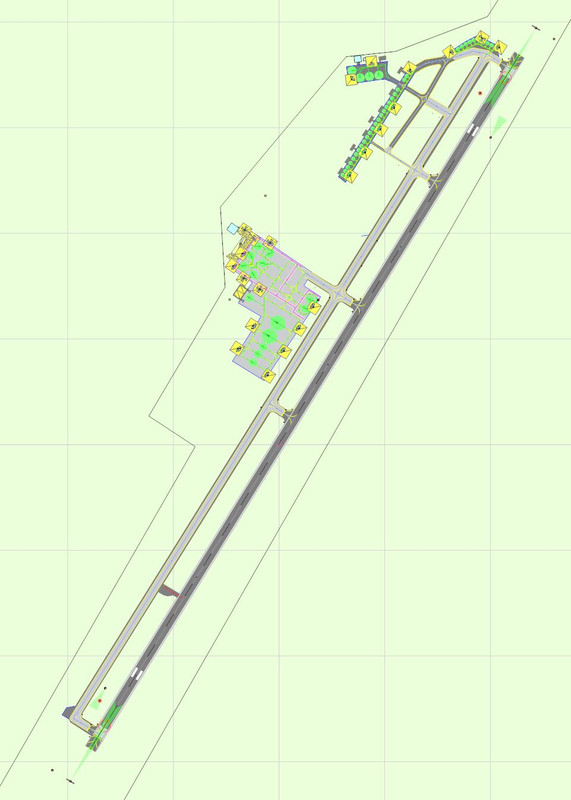 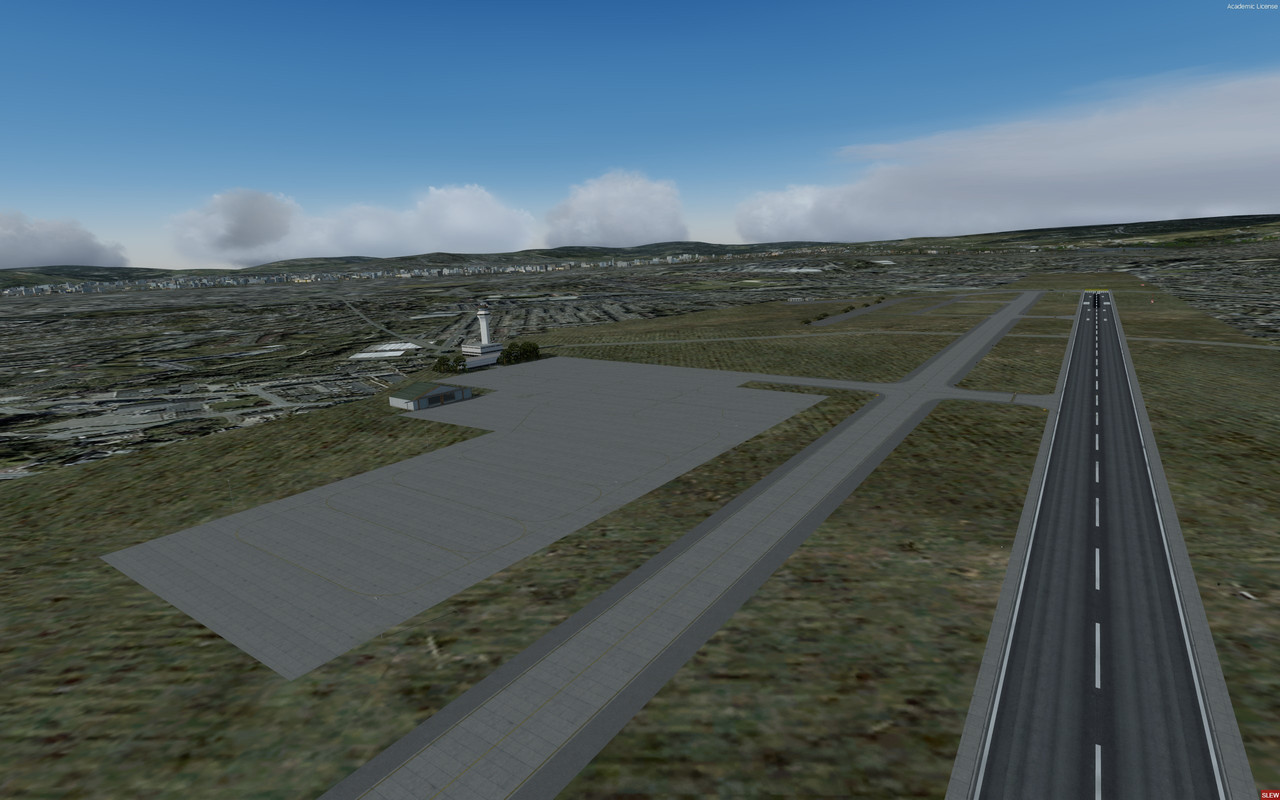   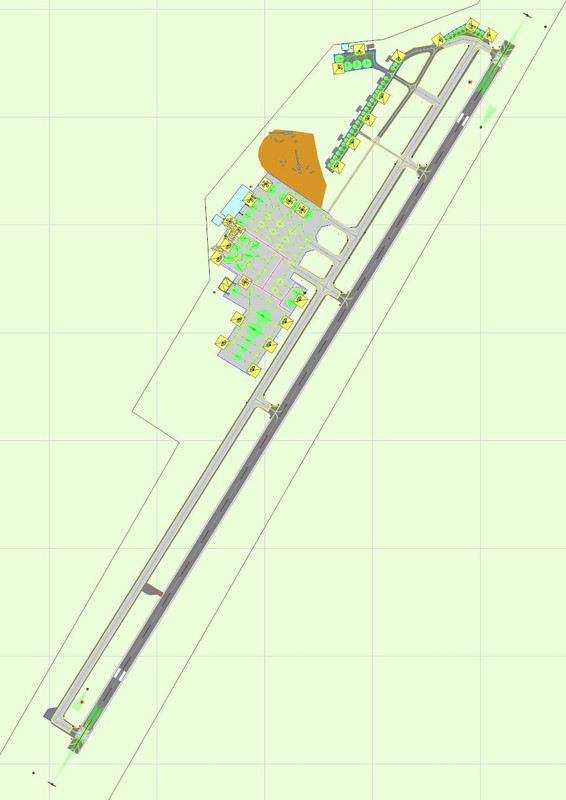 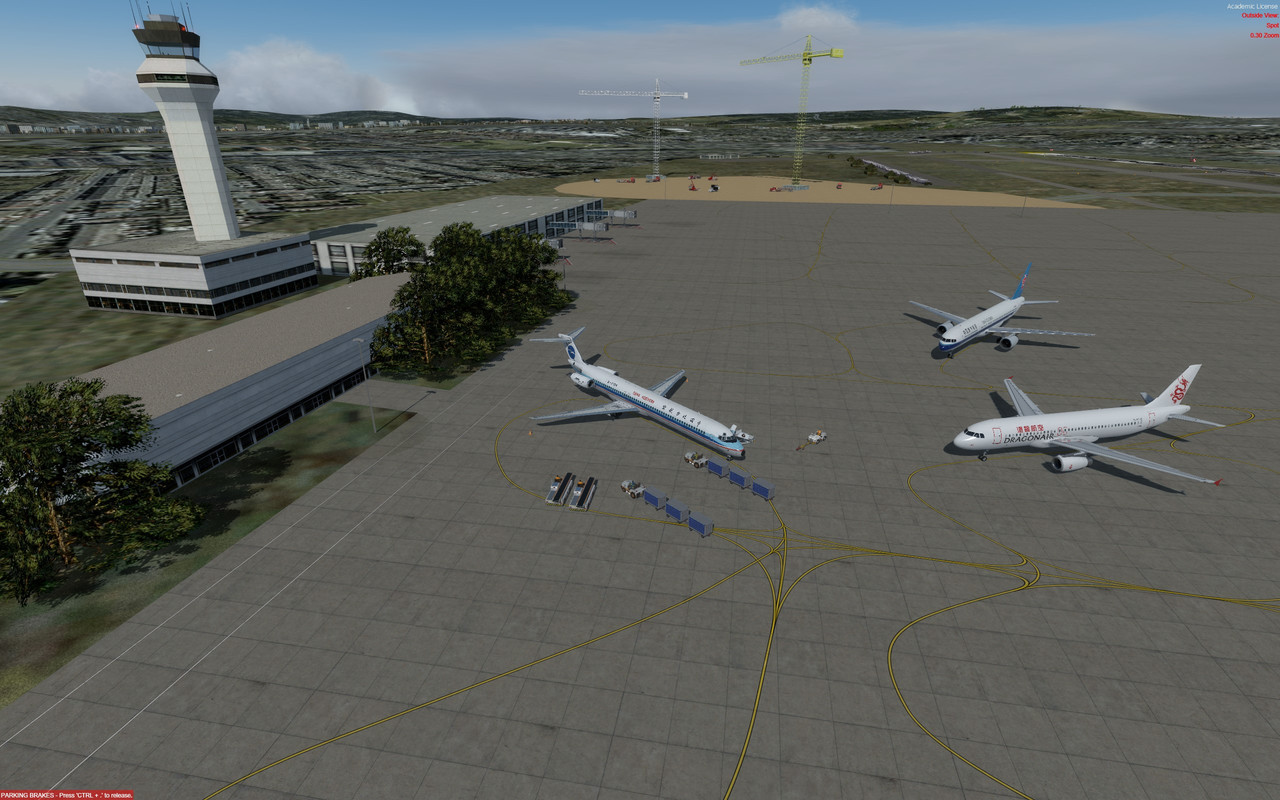  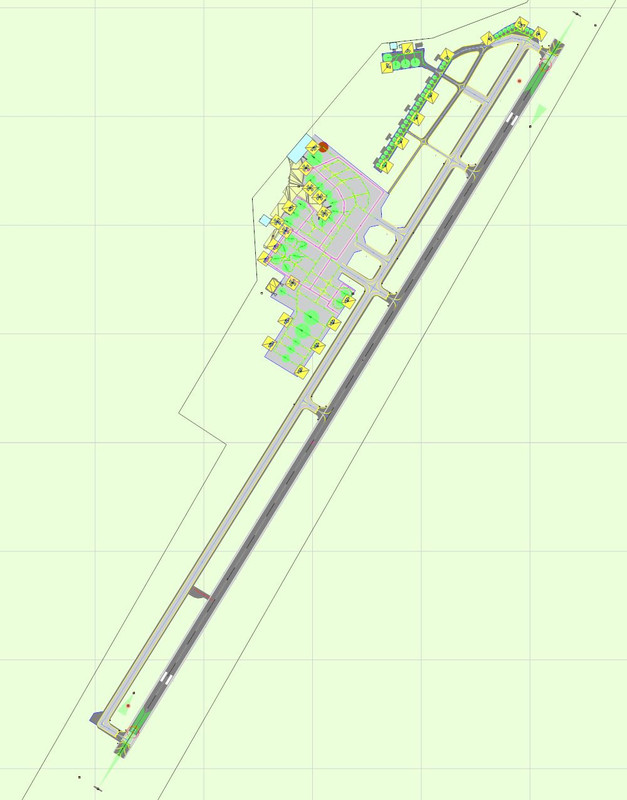 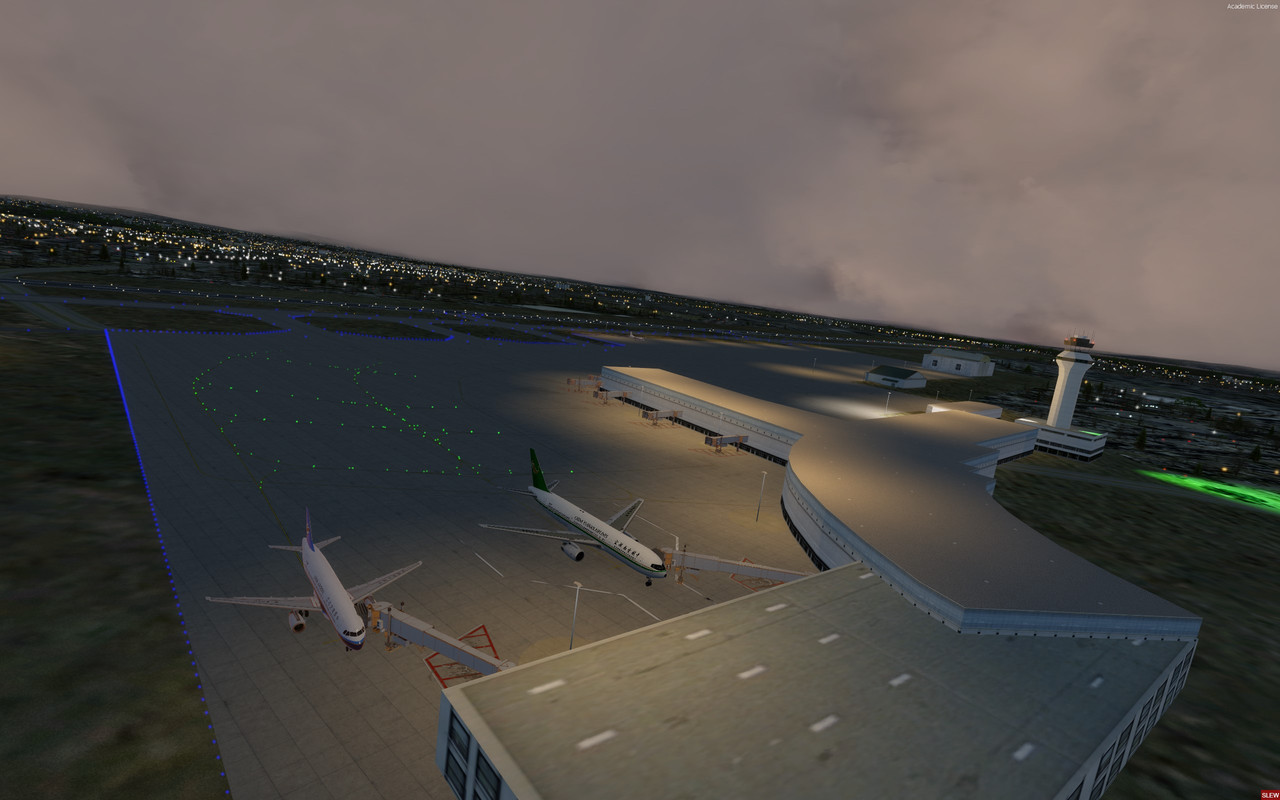    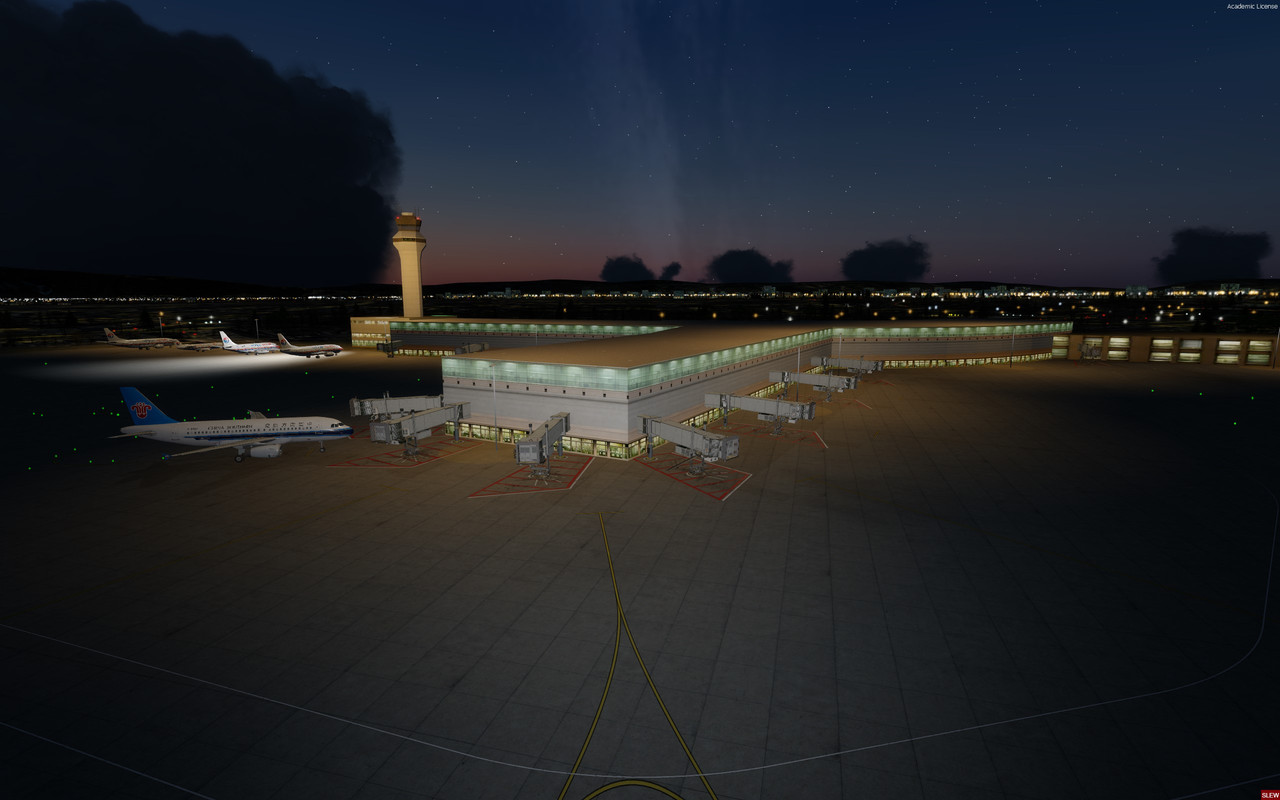 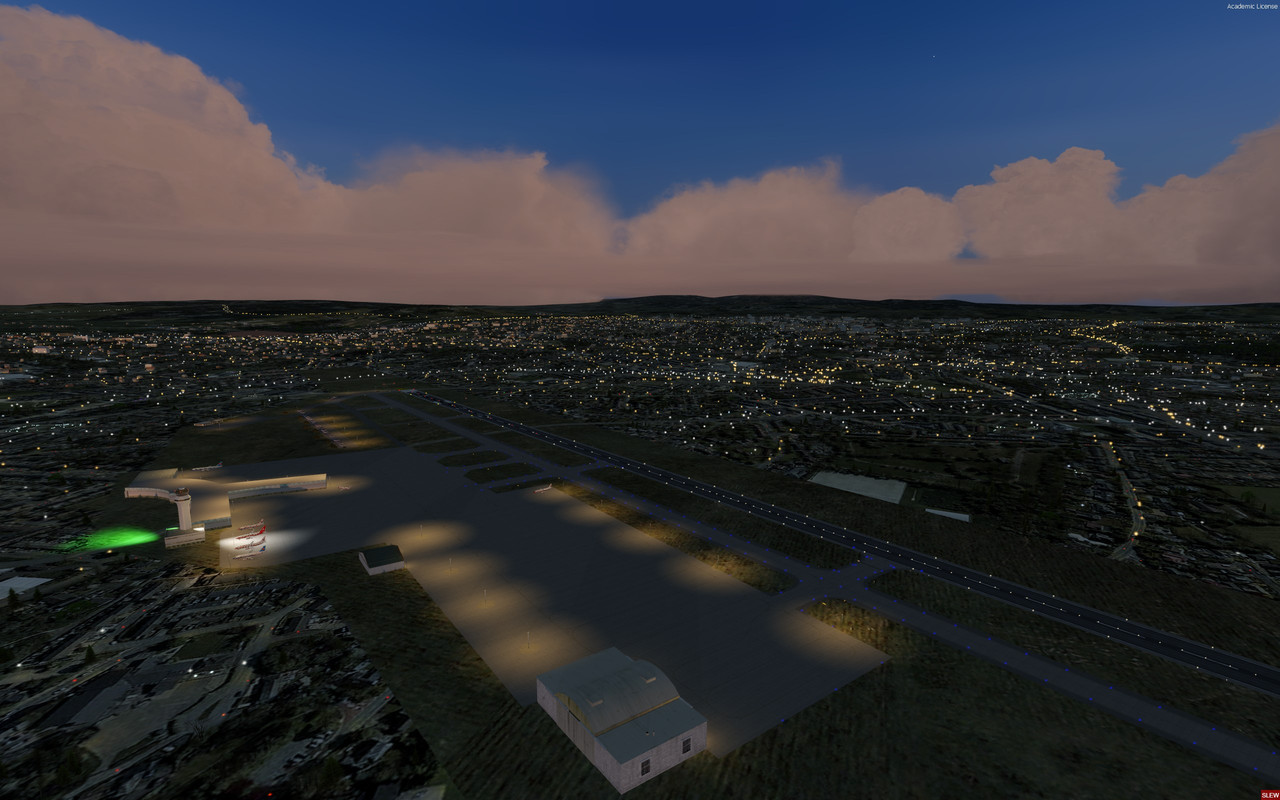  Download the 1985-2003 ZPPX Scenery Here: drive.google.com/drive/u/1/folders/1Oz72d1bVtqrSjqyti_yfKoMD7emJm-GS |
|
|
|
Post by perficad on May 25, 2022 11:50:38 GMT -5
As promised a while back, I have edited the FSX ADE to add Chasen's Aeroquay object to work in this SIM (since the P3D file does not). The required files are on my Onedrive.
This is to use with my 1979 flightplans (see links in the FP's page)
You need to add the CYYZ file and the Object files which are seperate.
Gate allocations have been added as best as I know for the retro period.
|
|


























































































